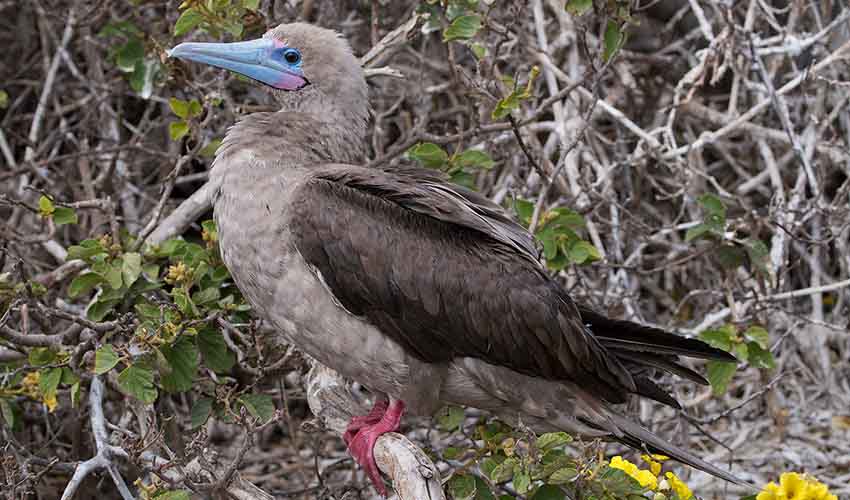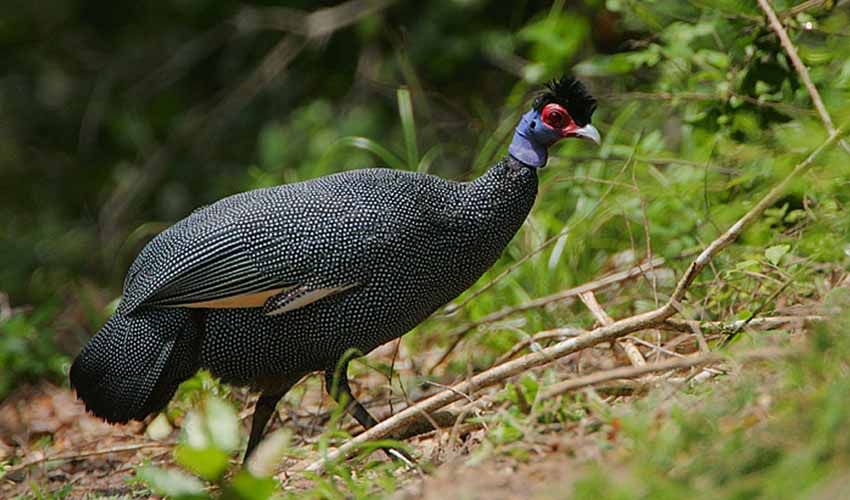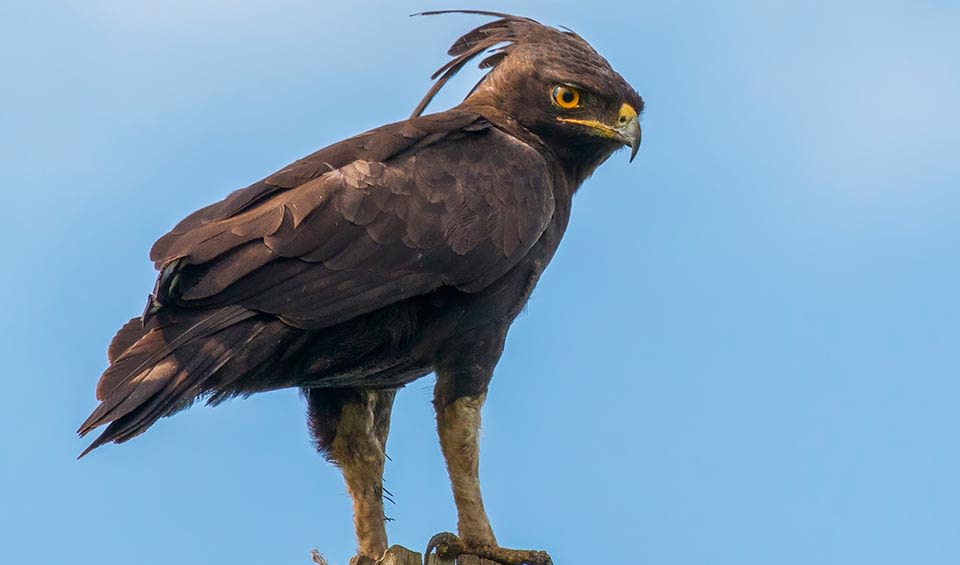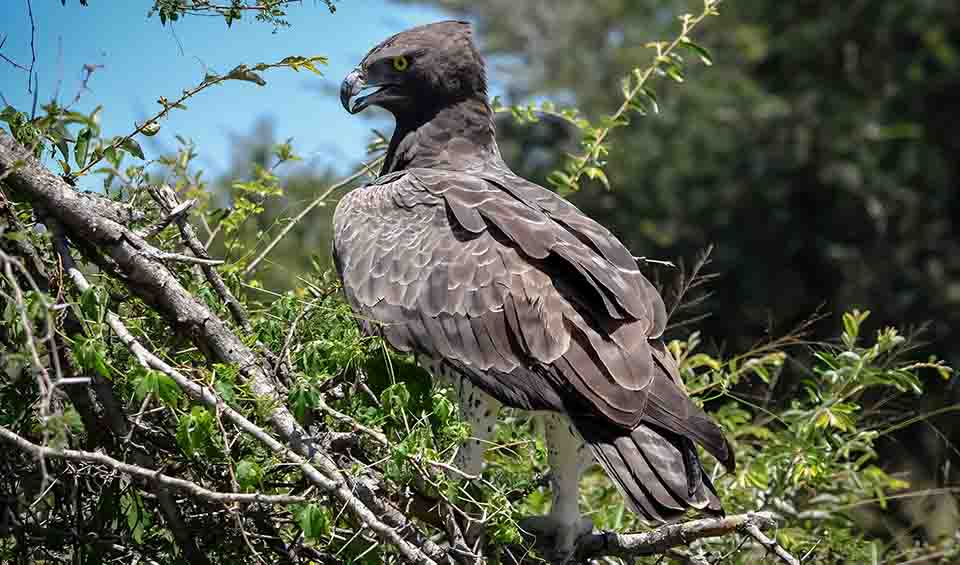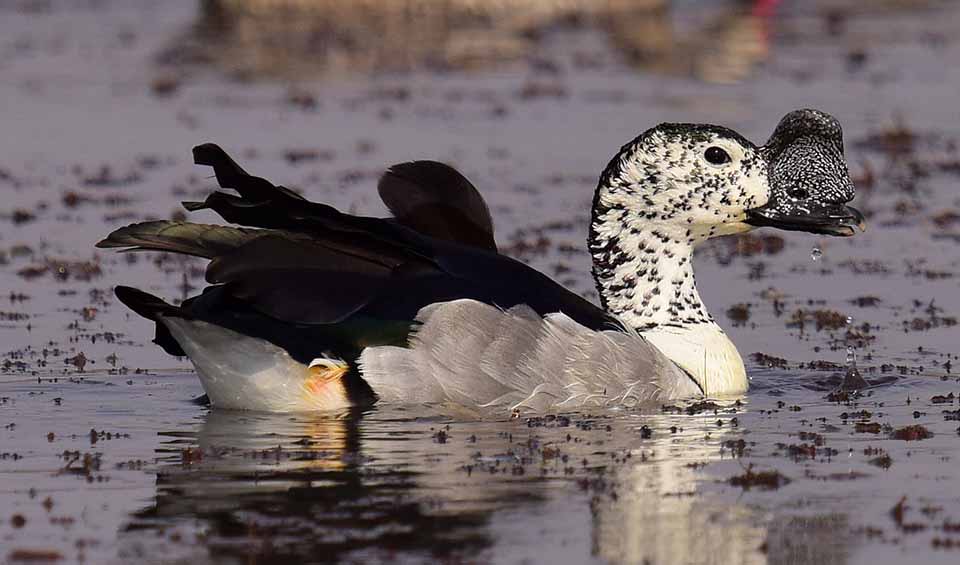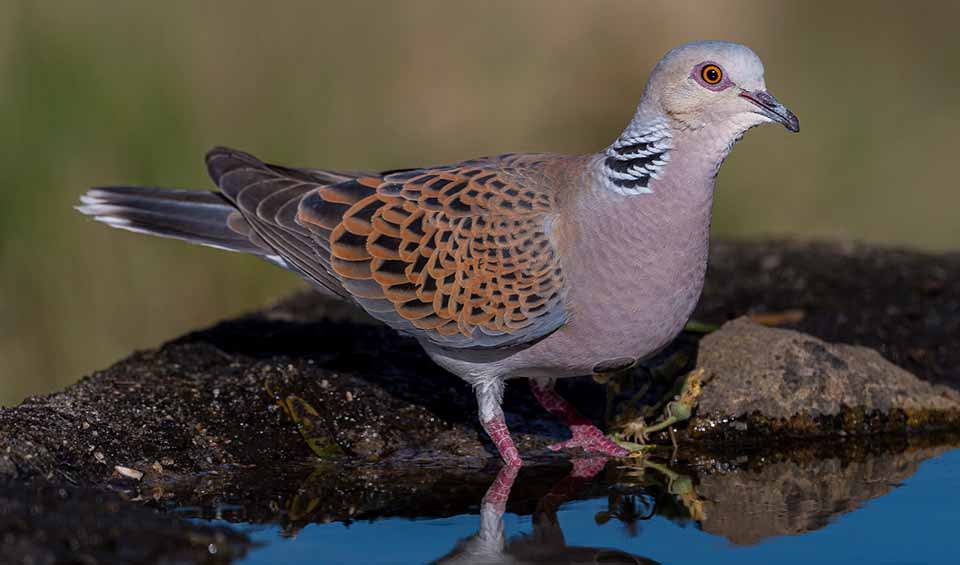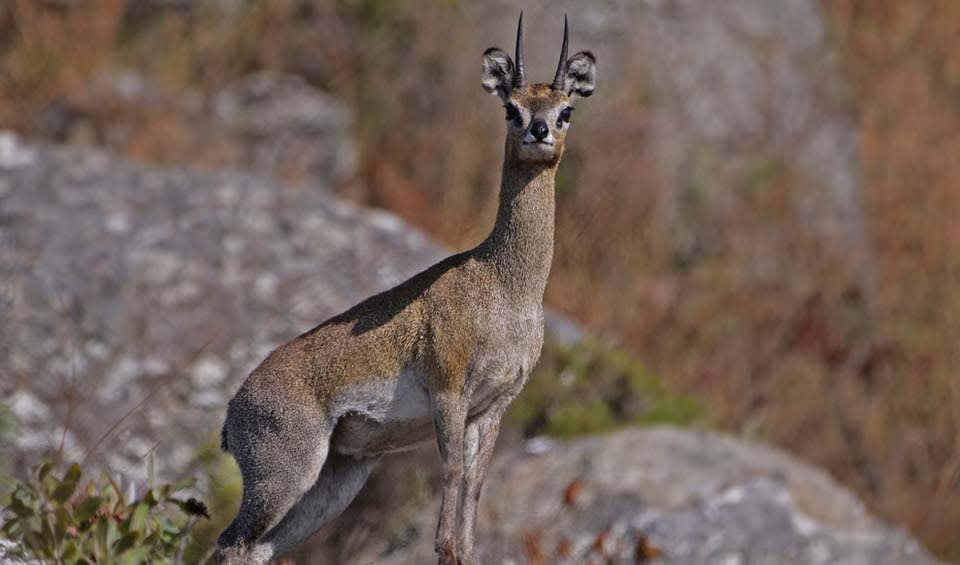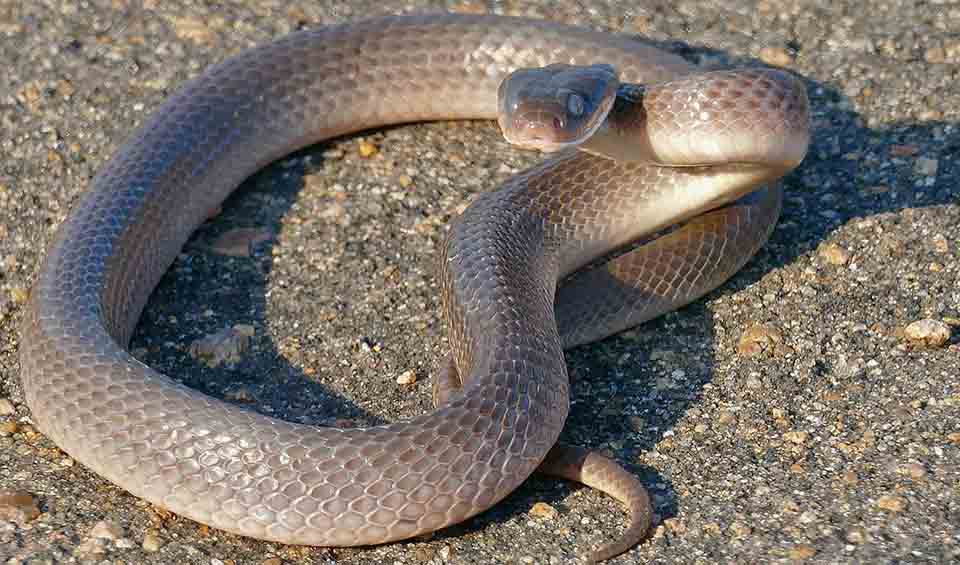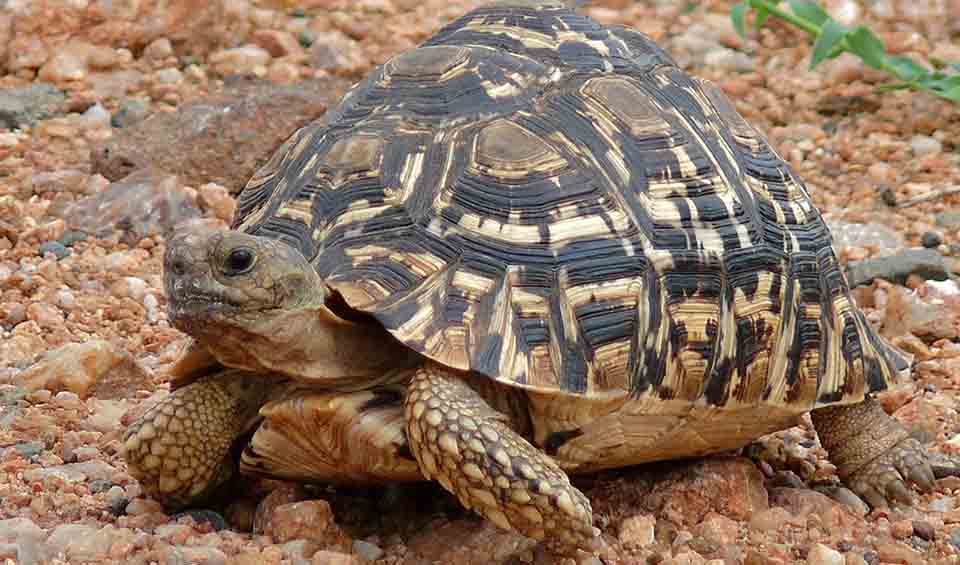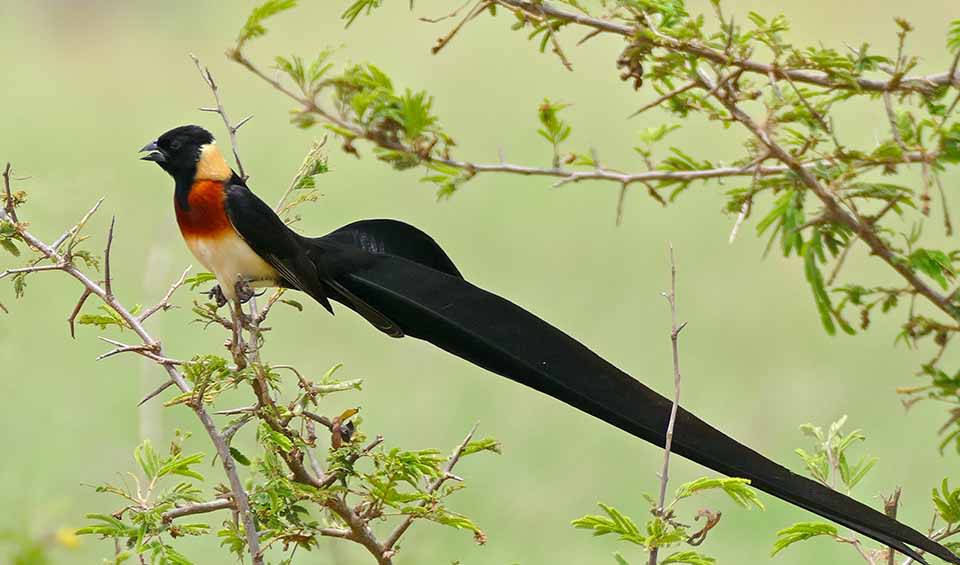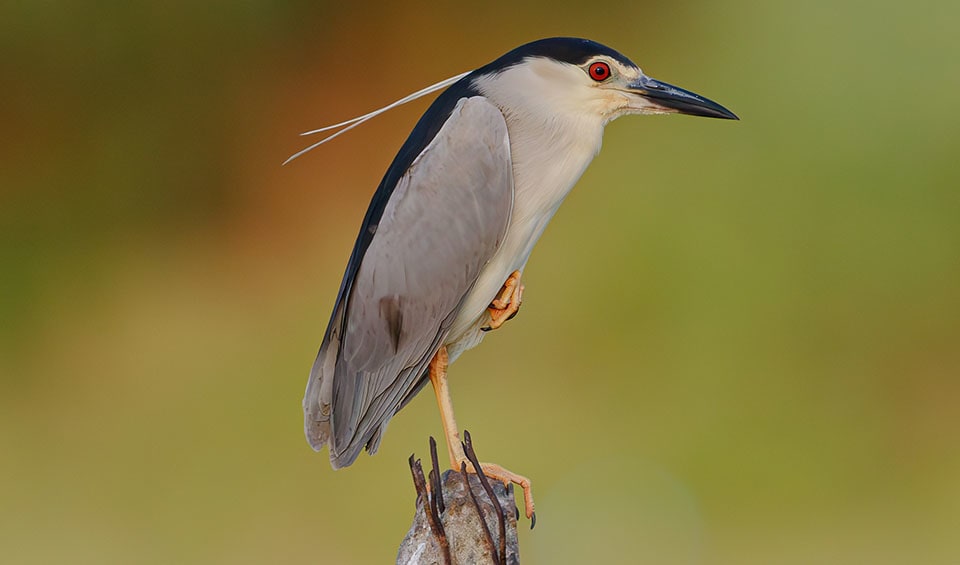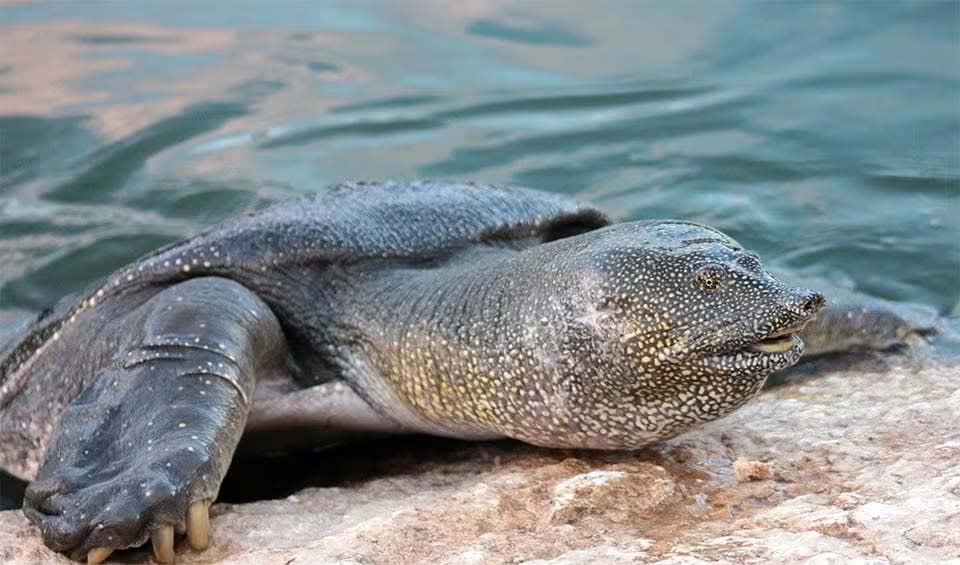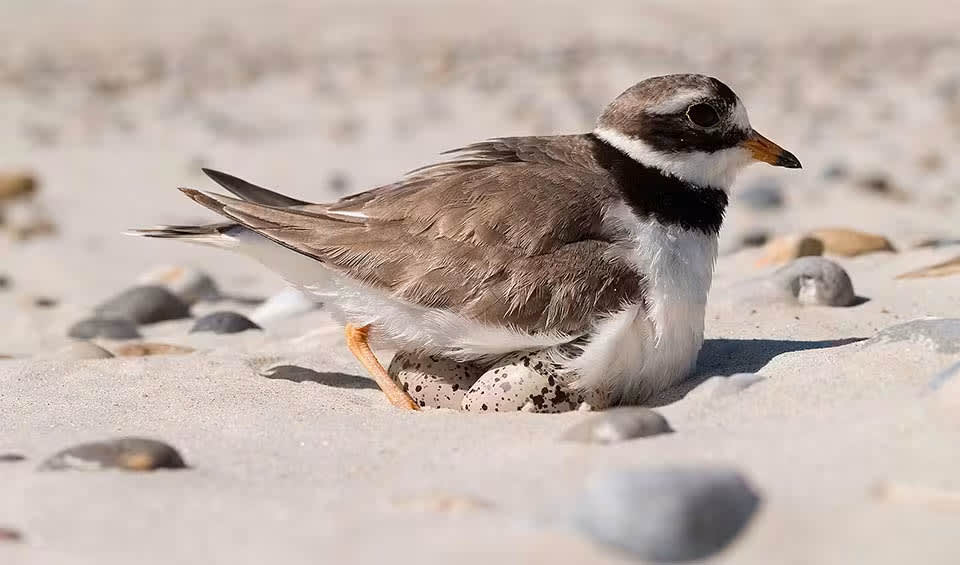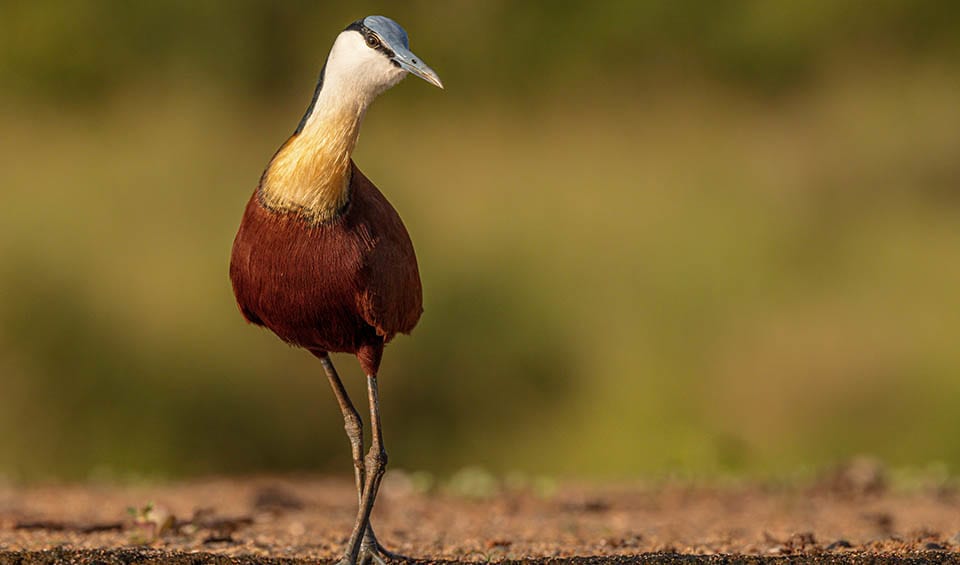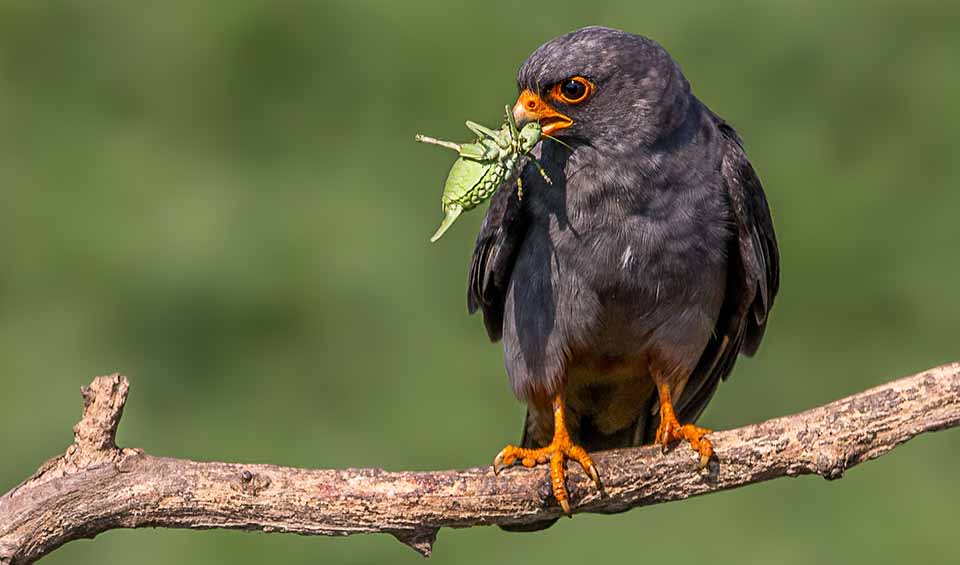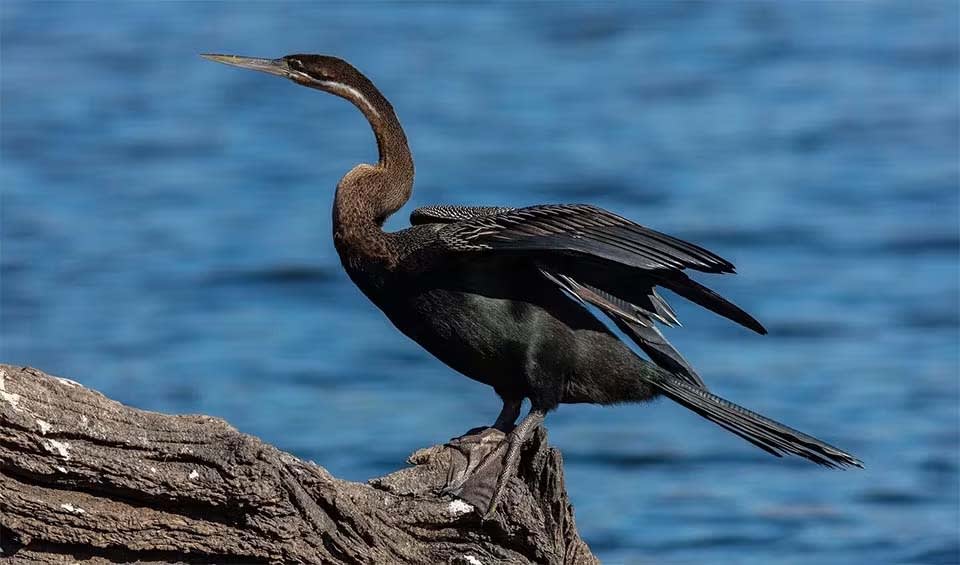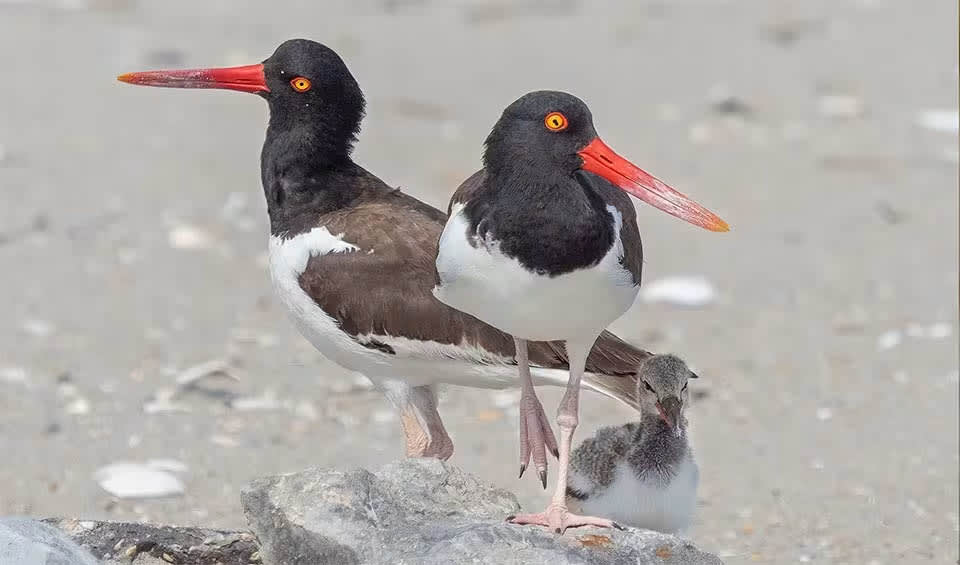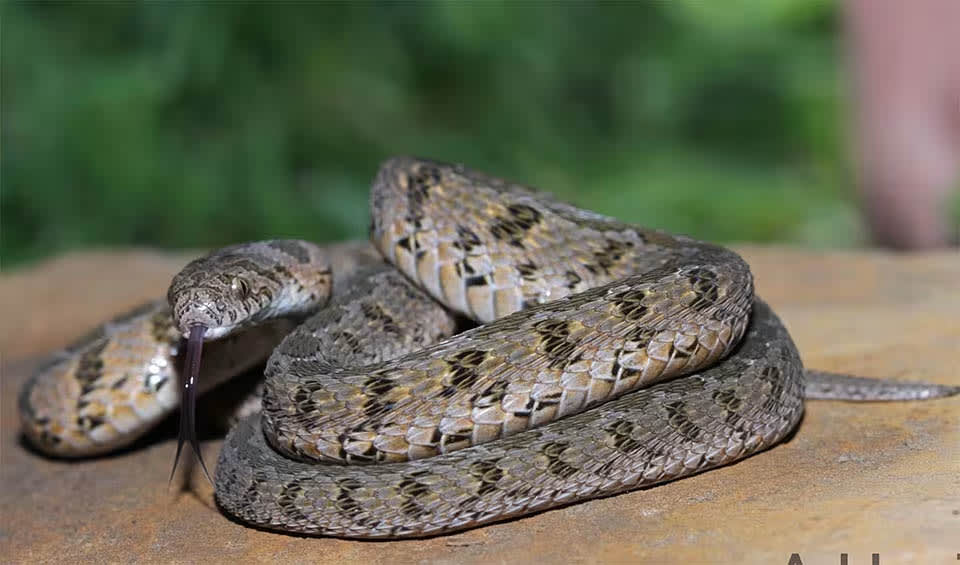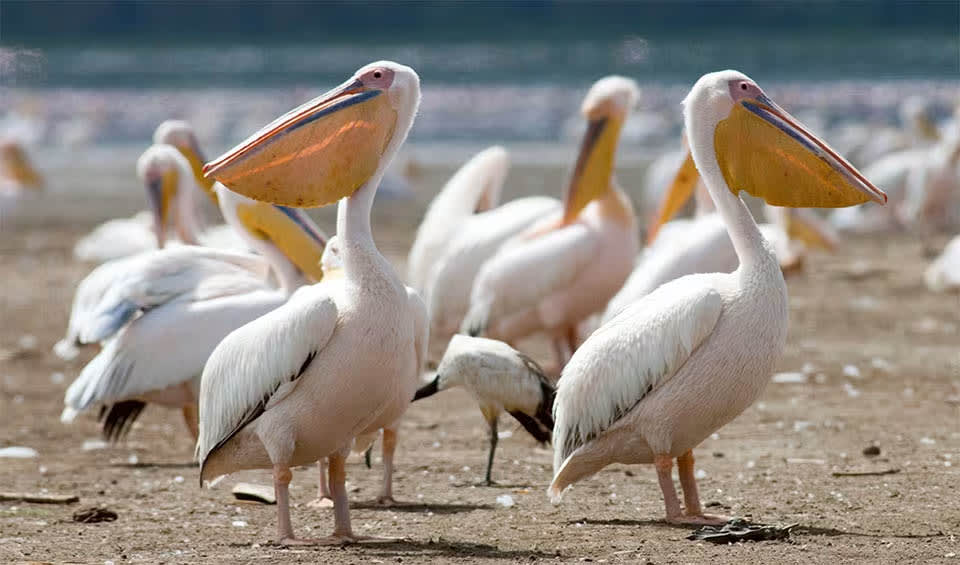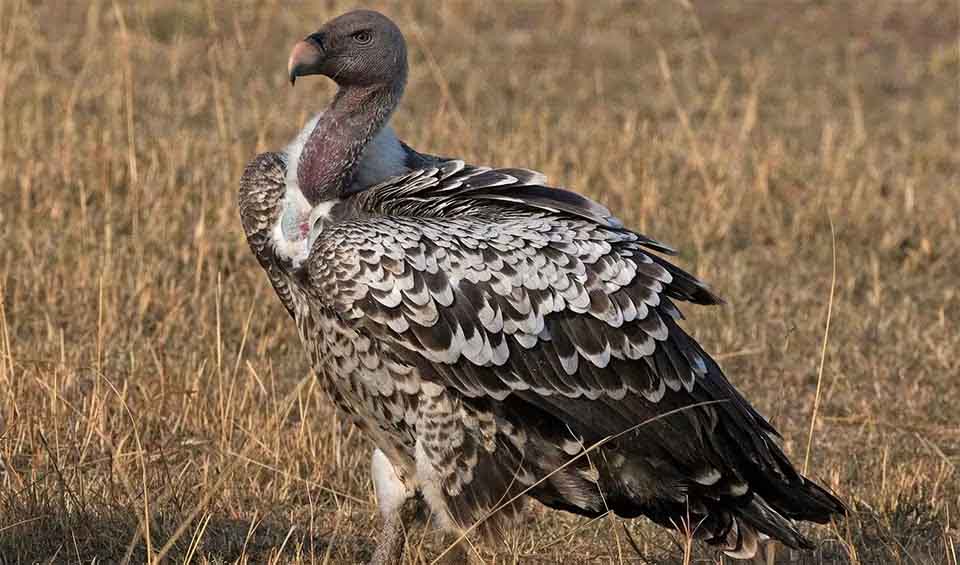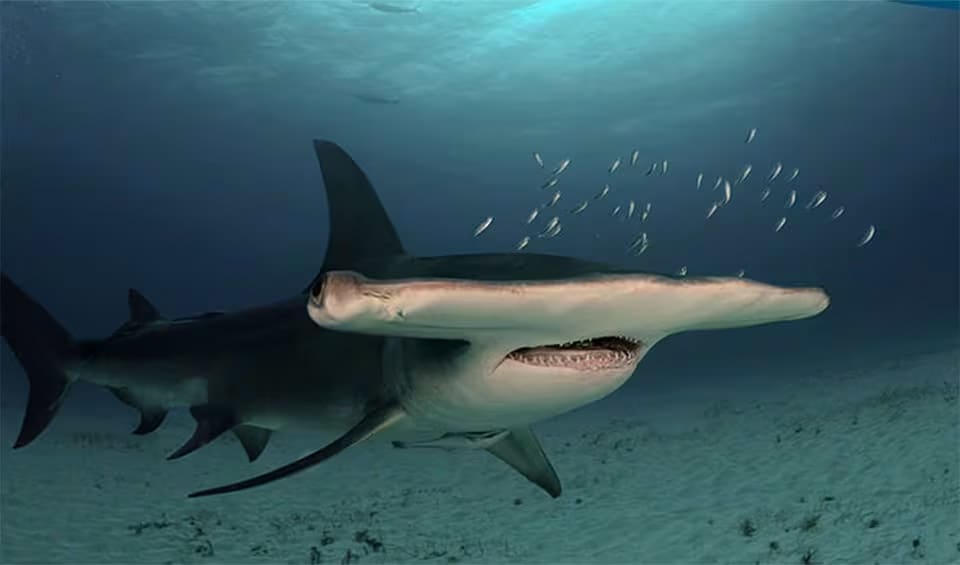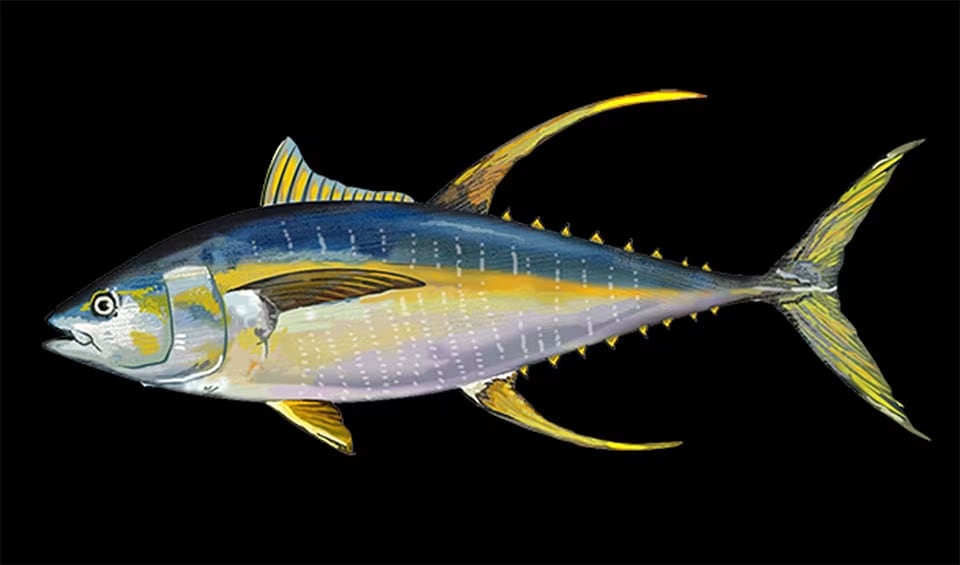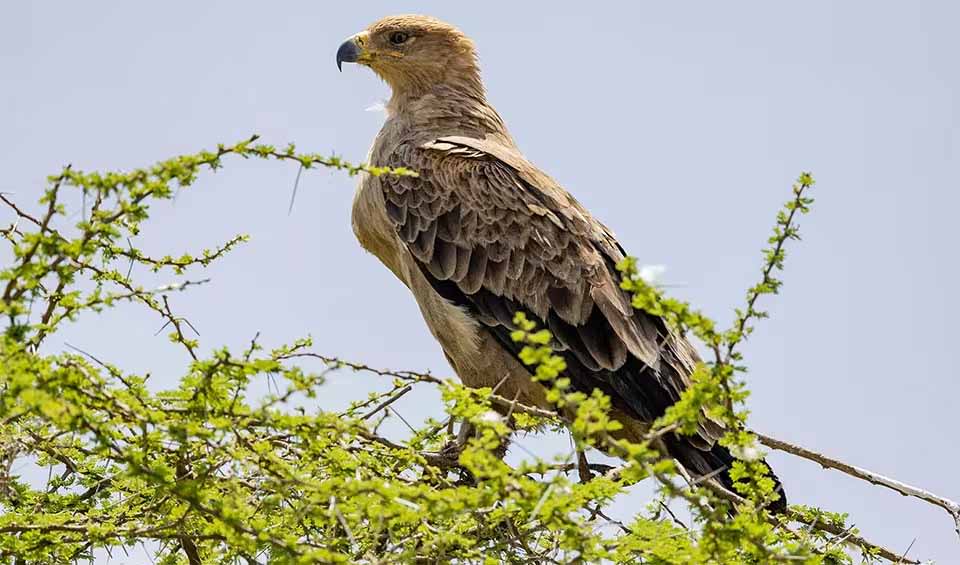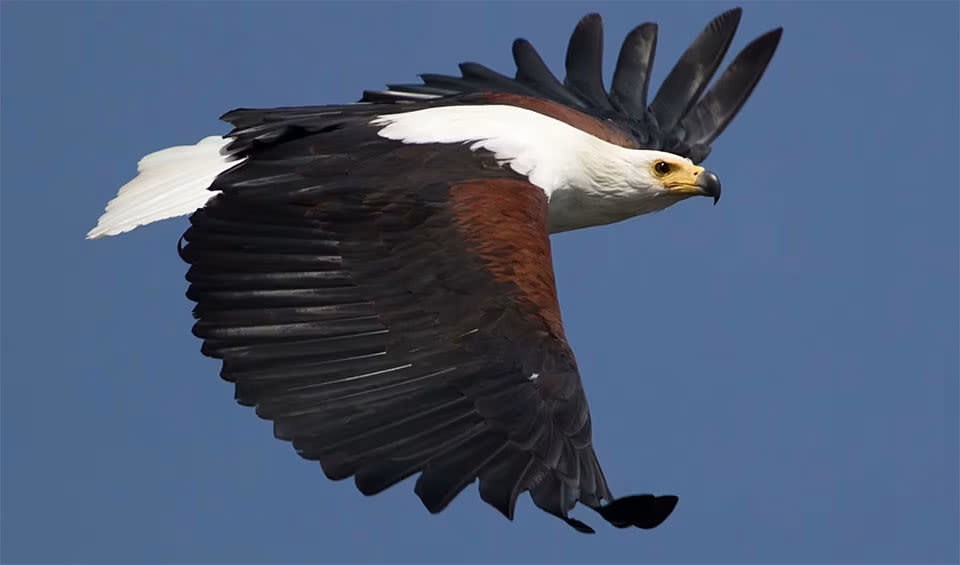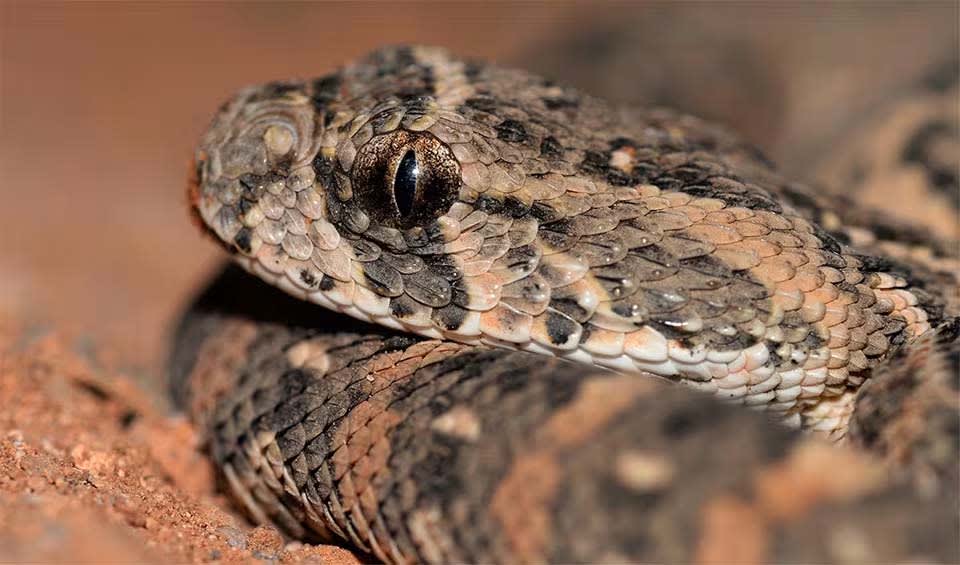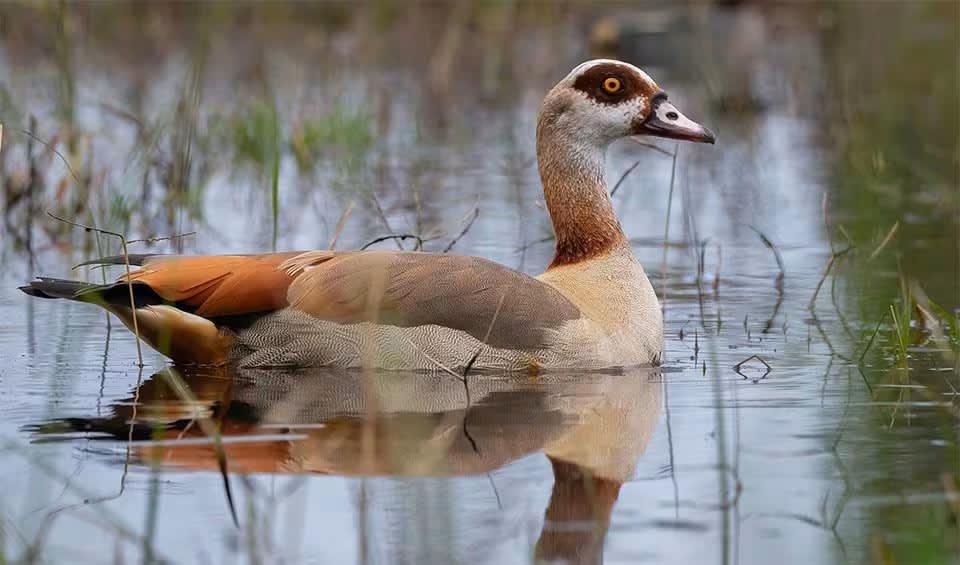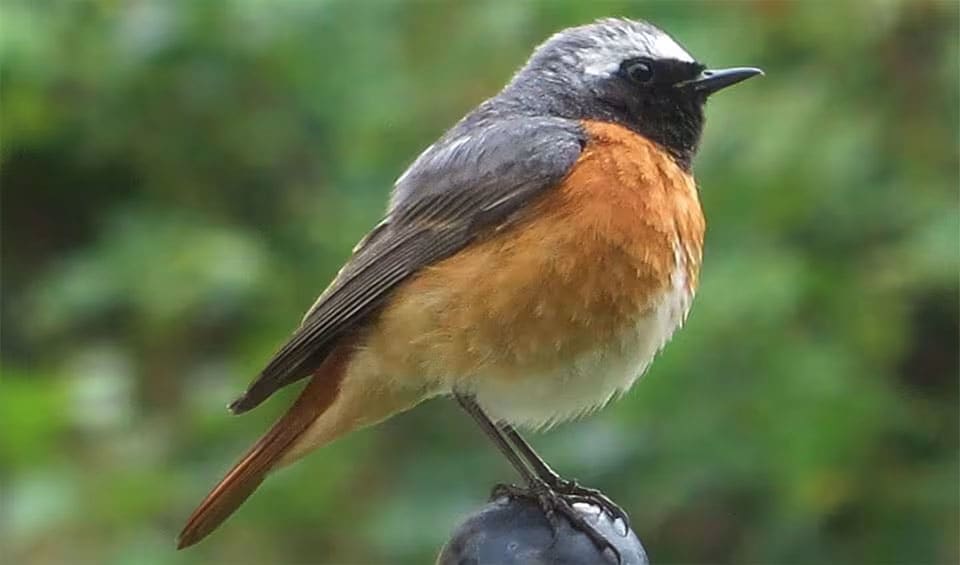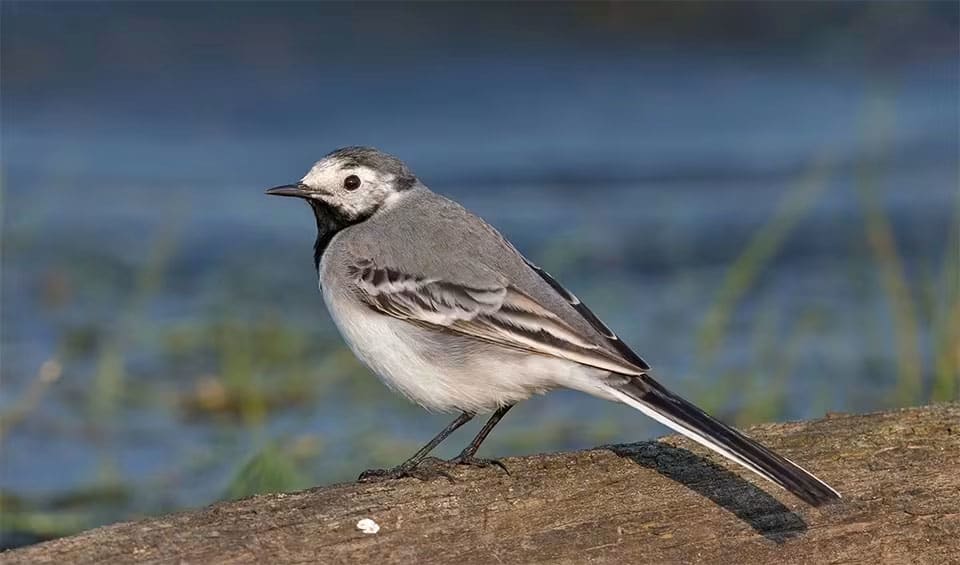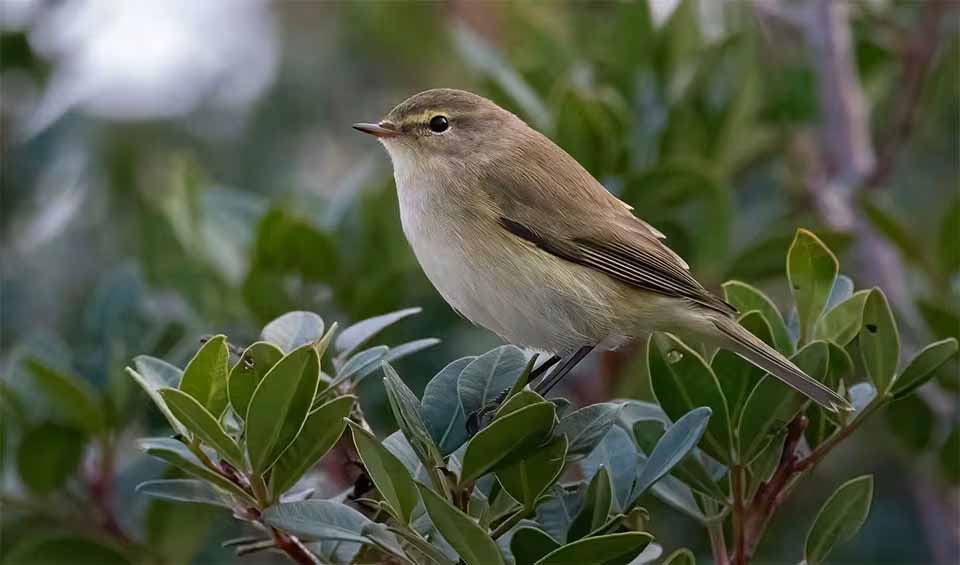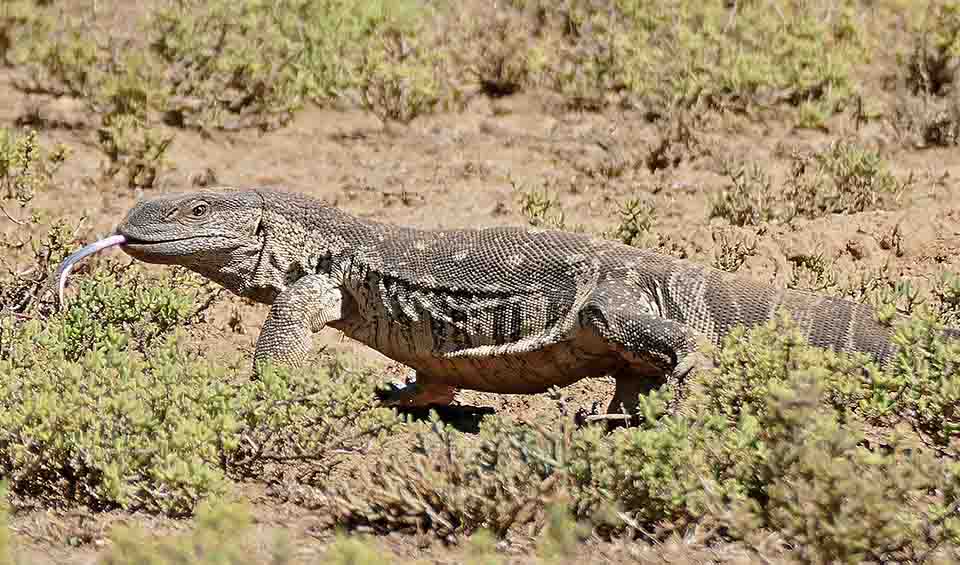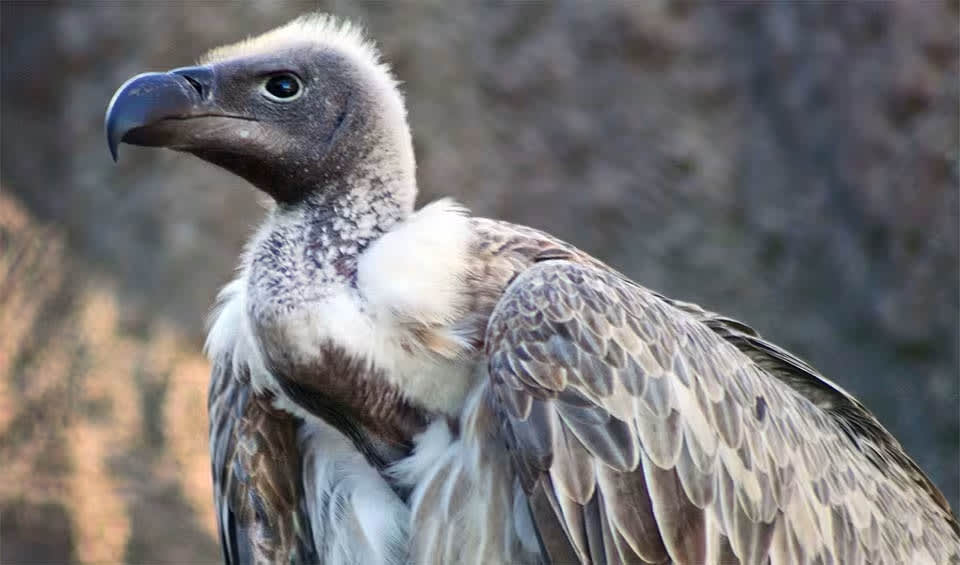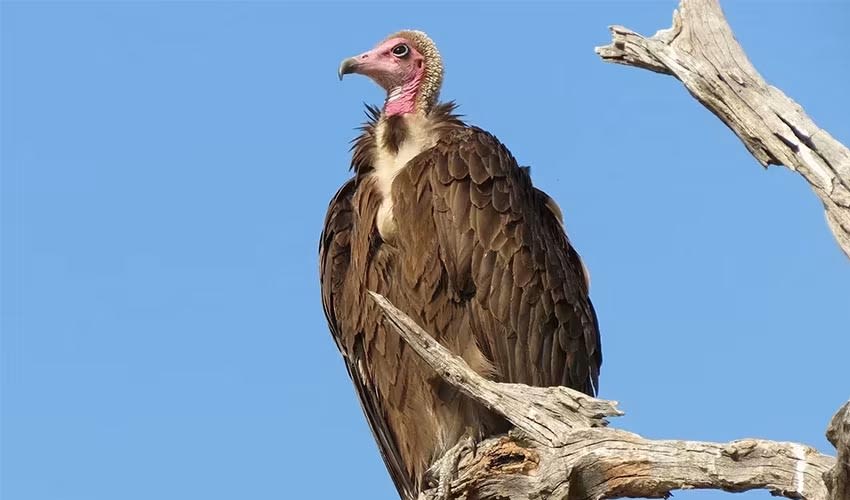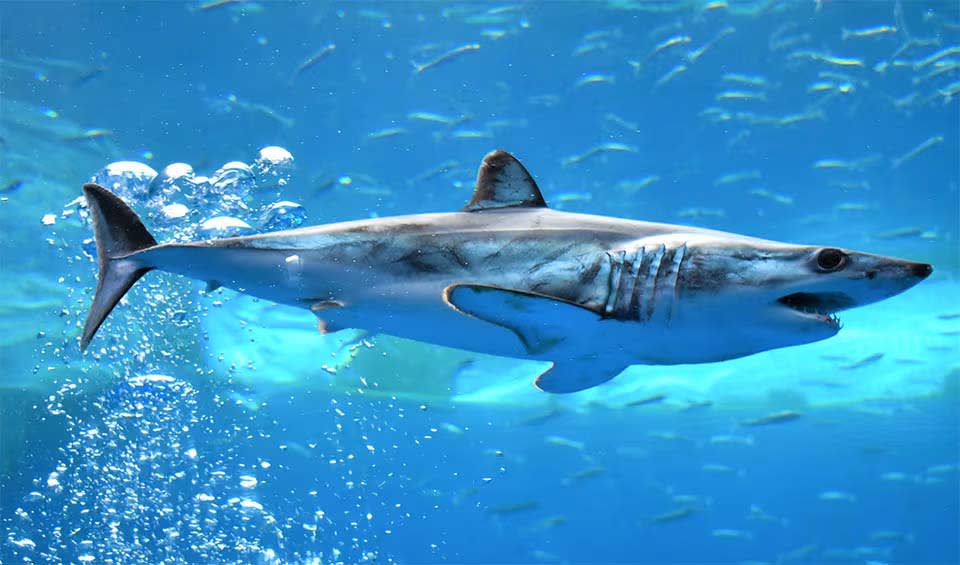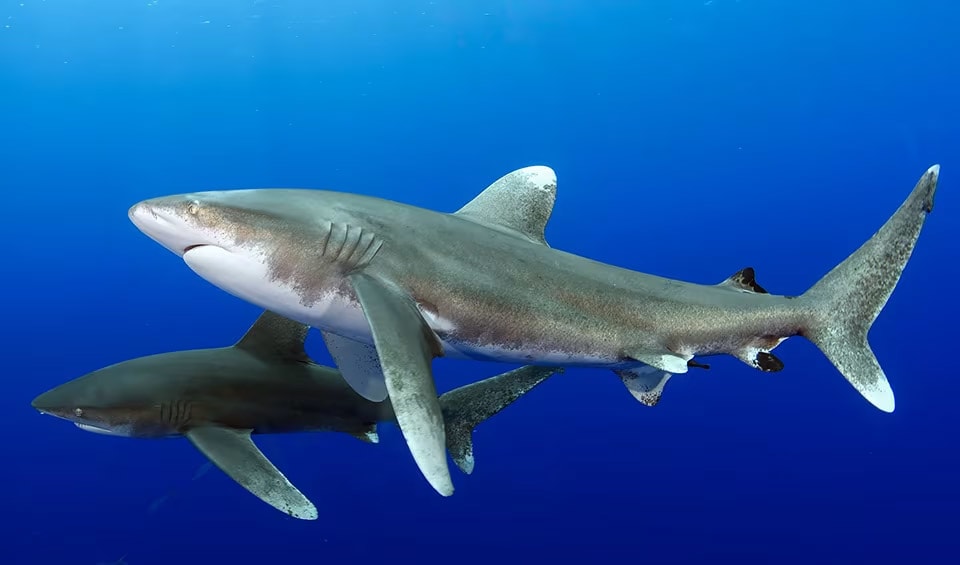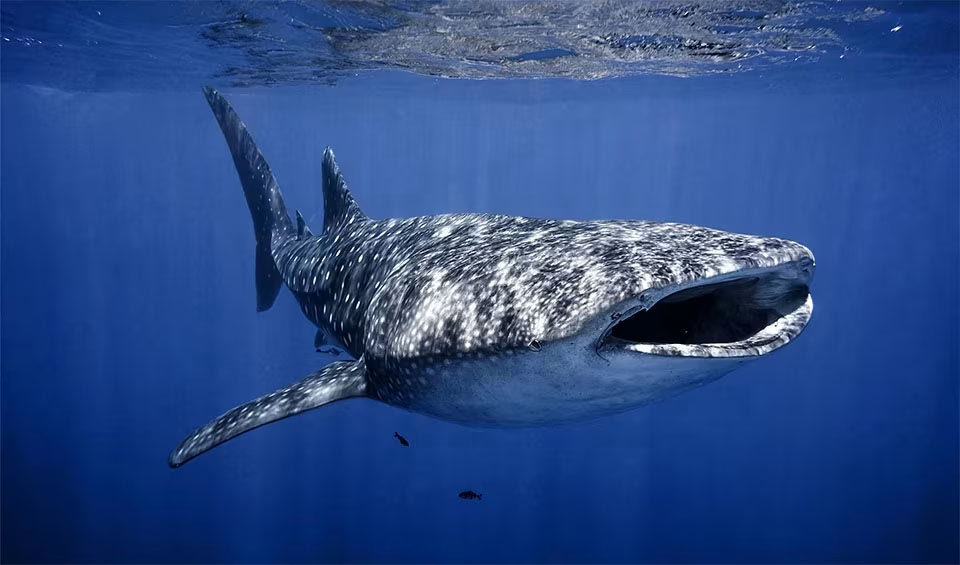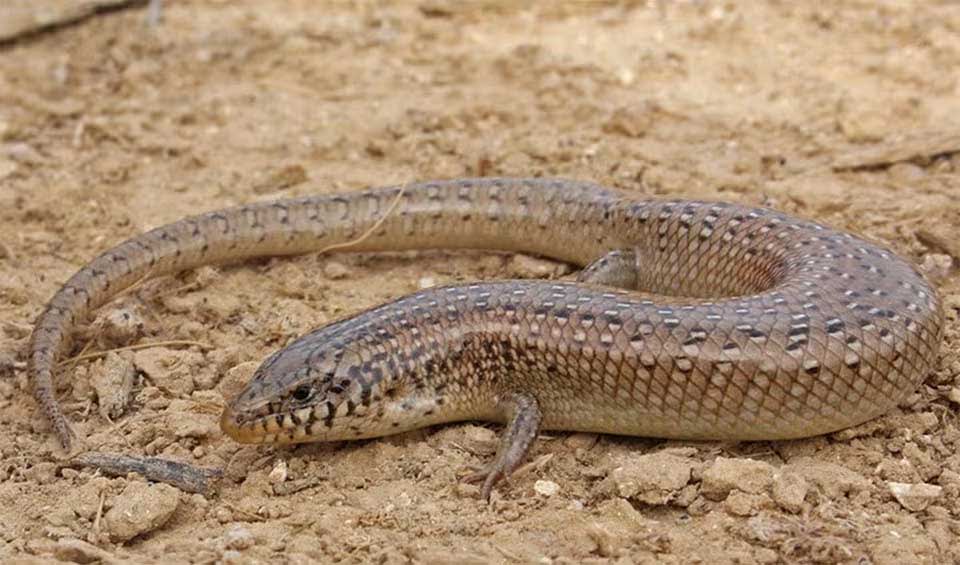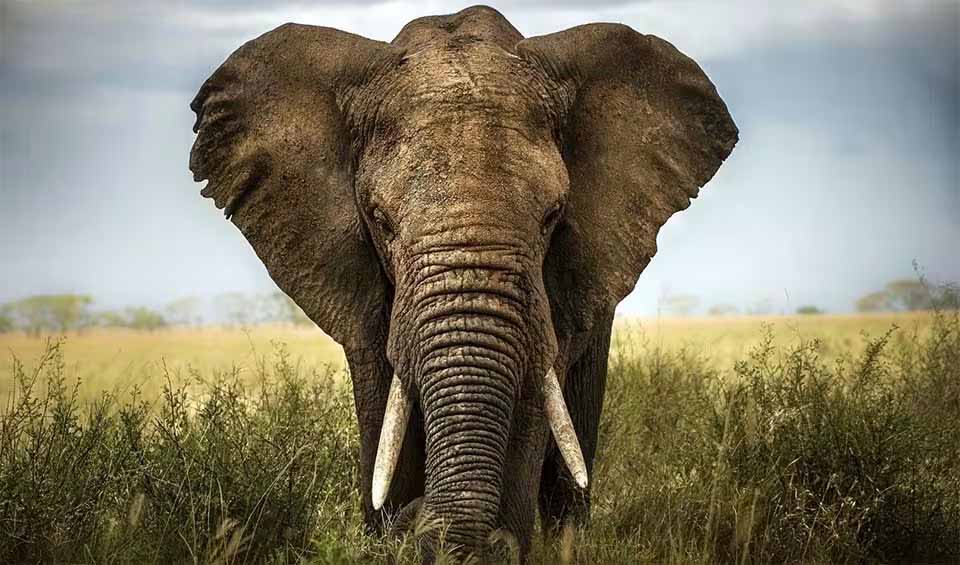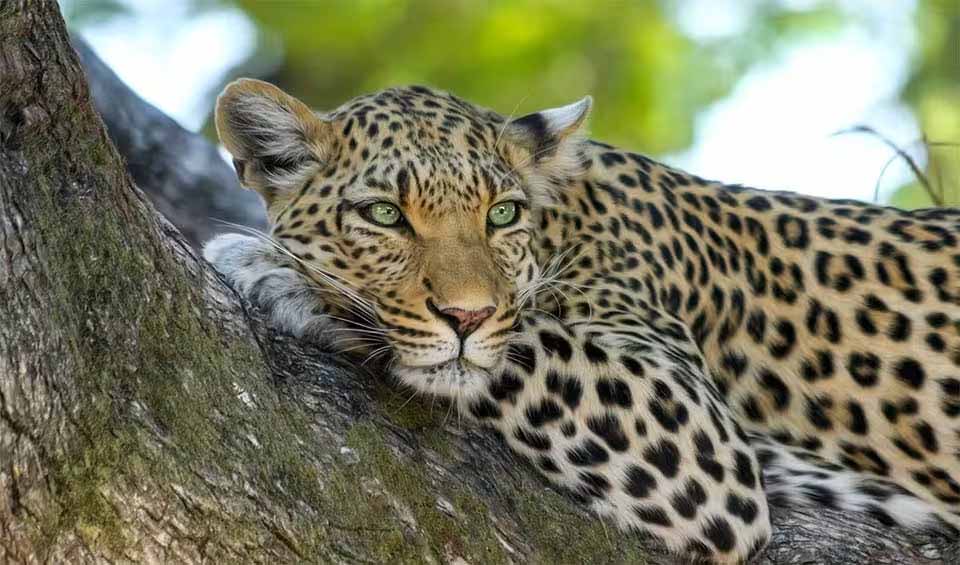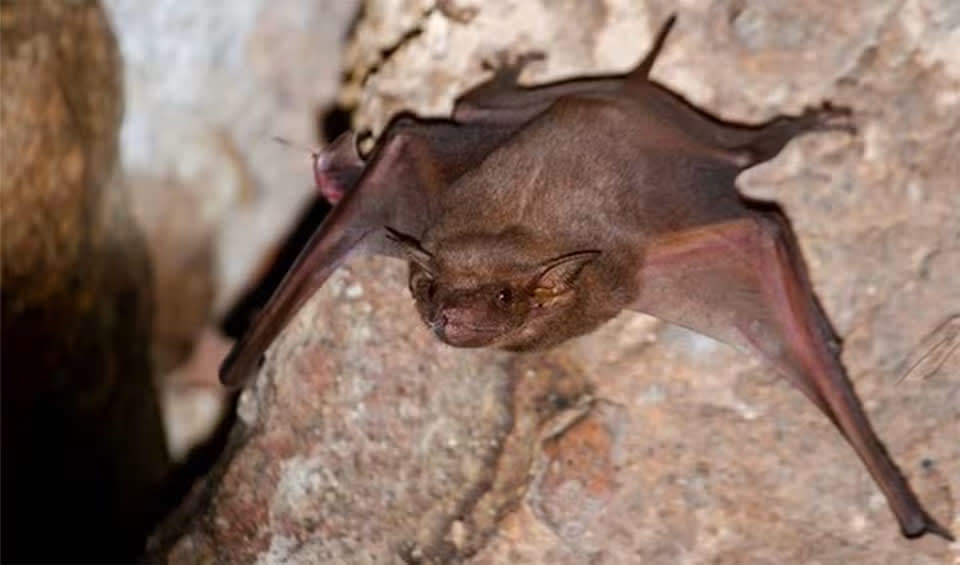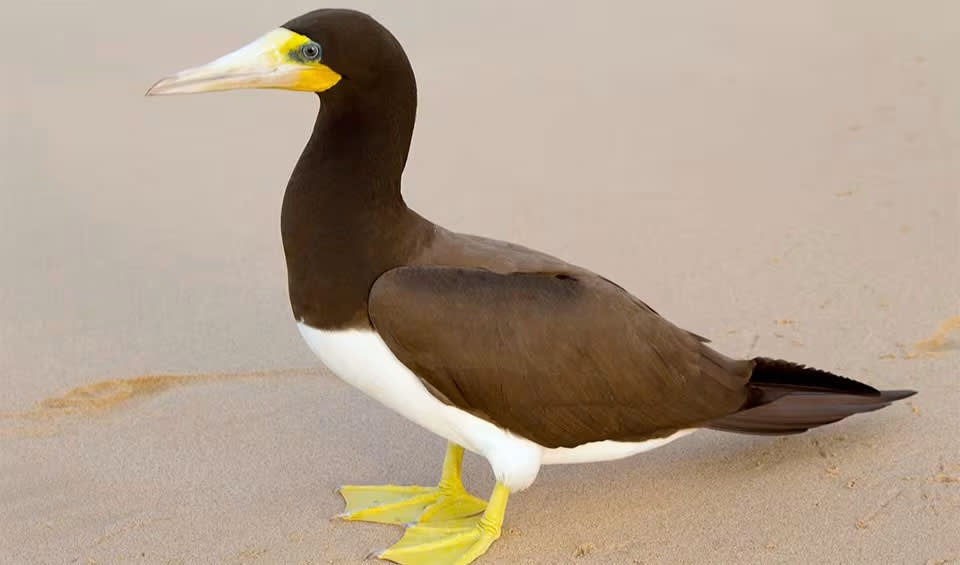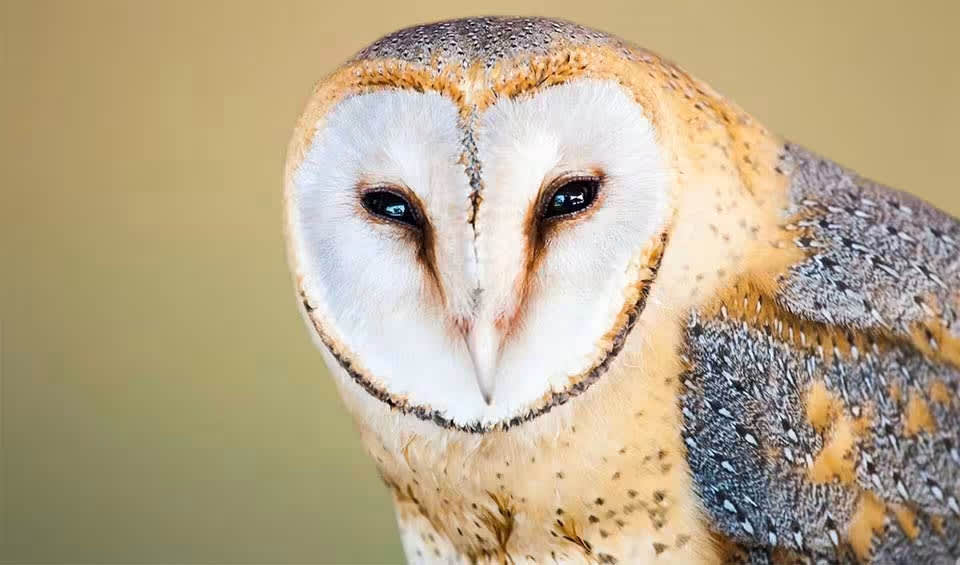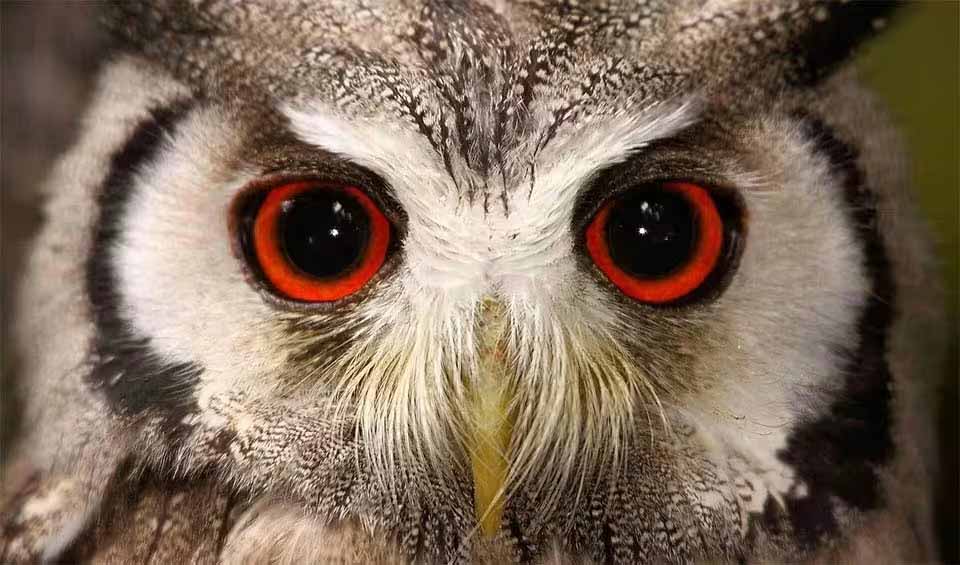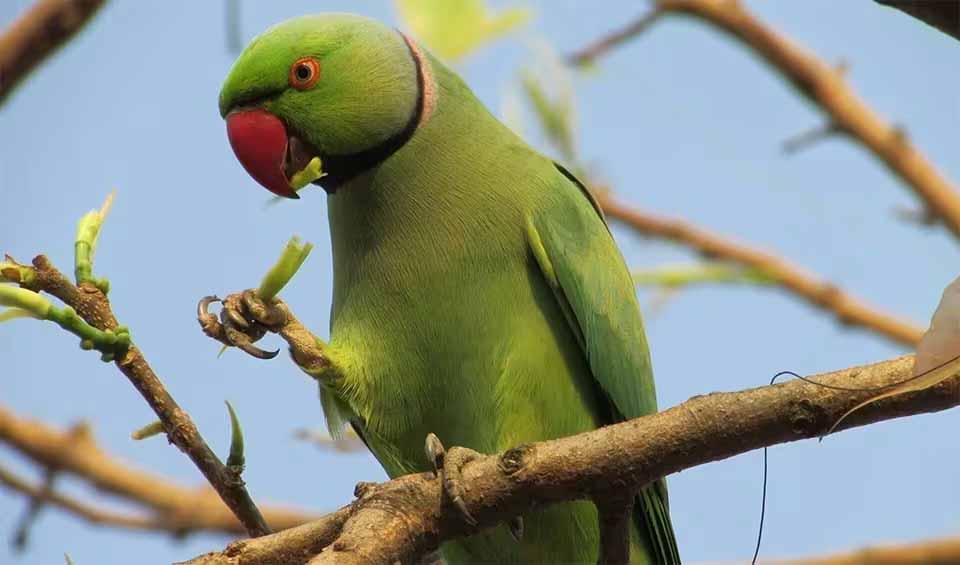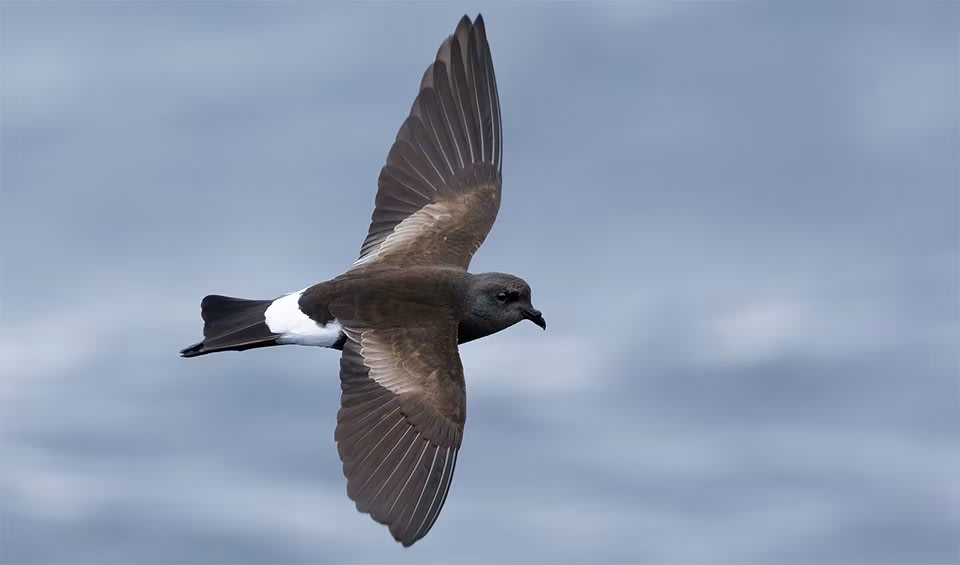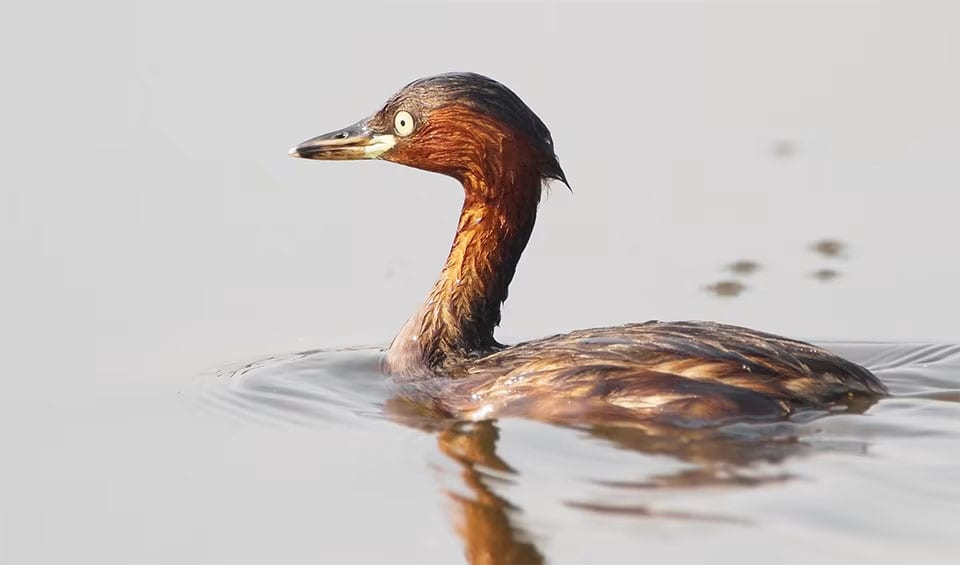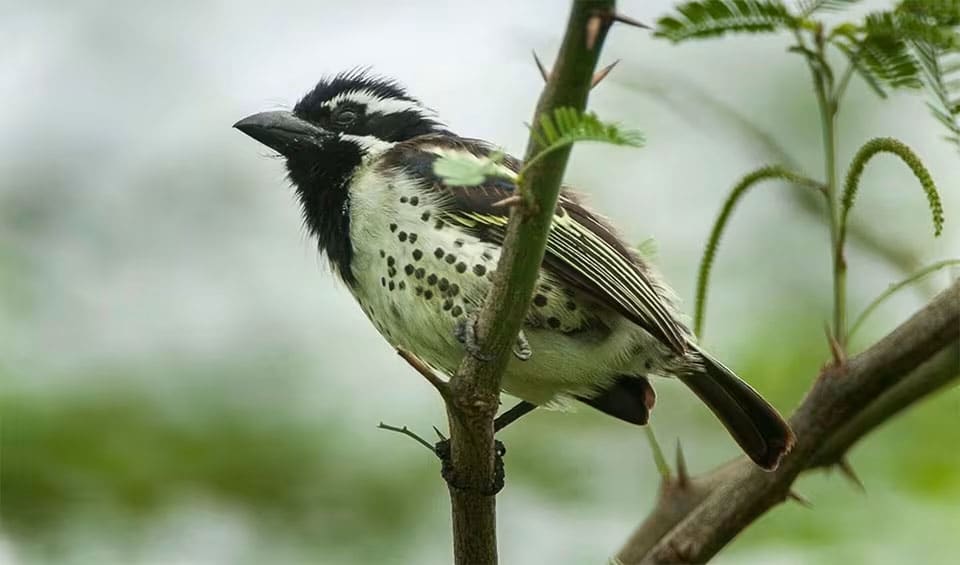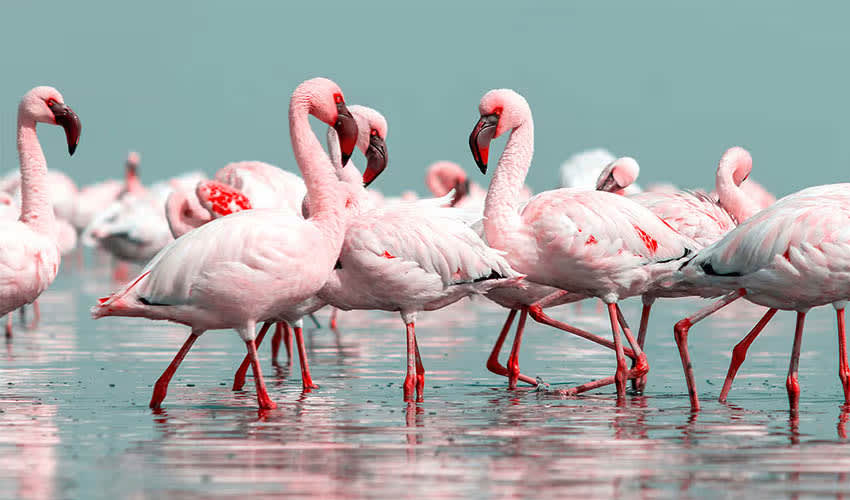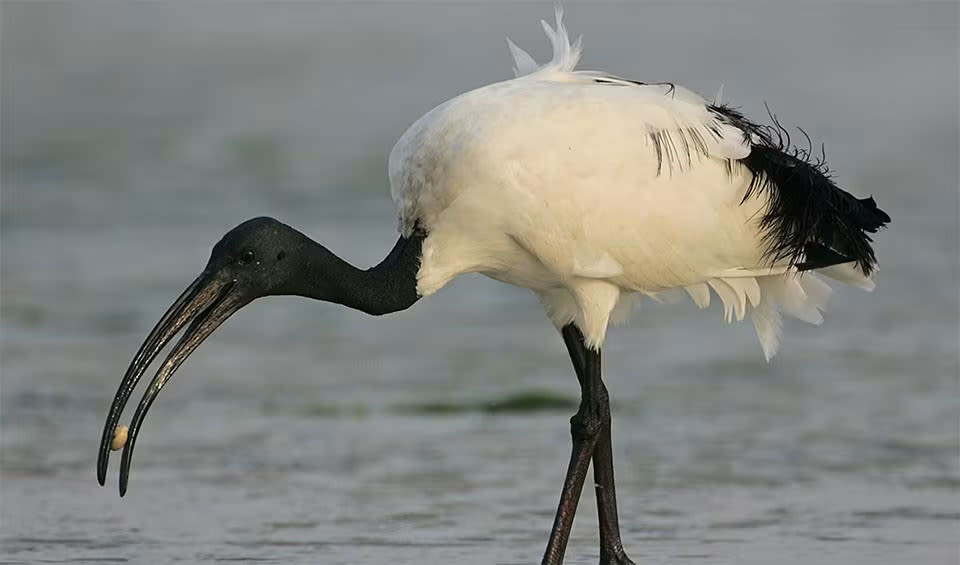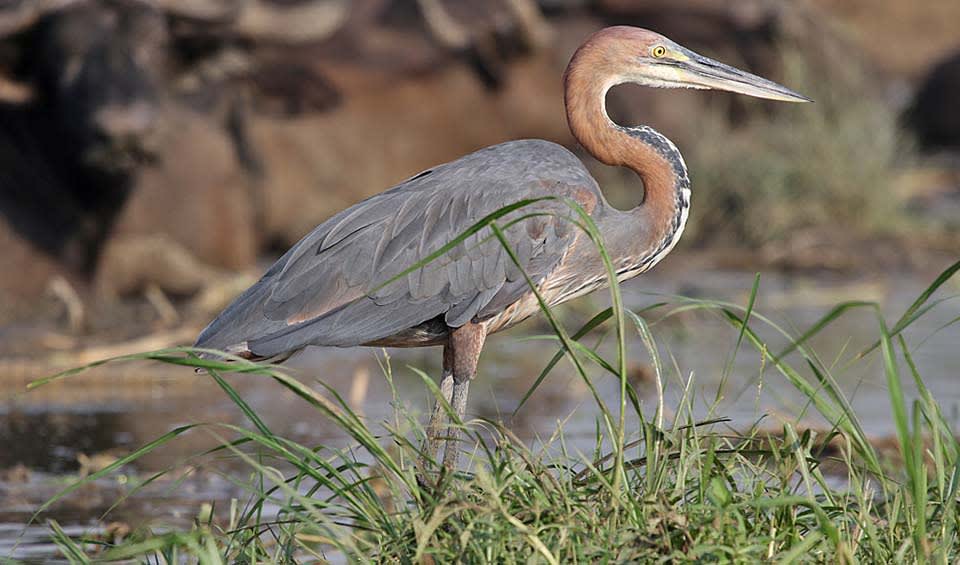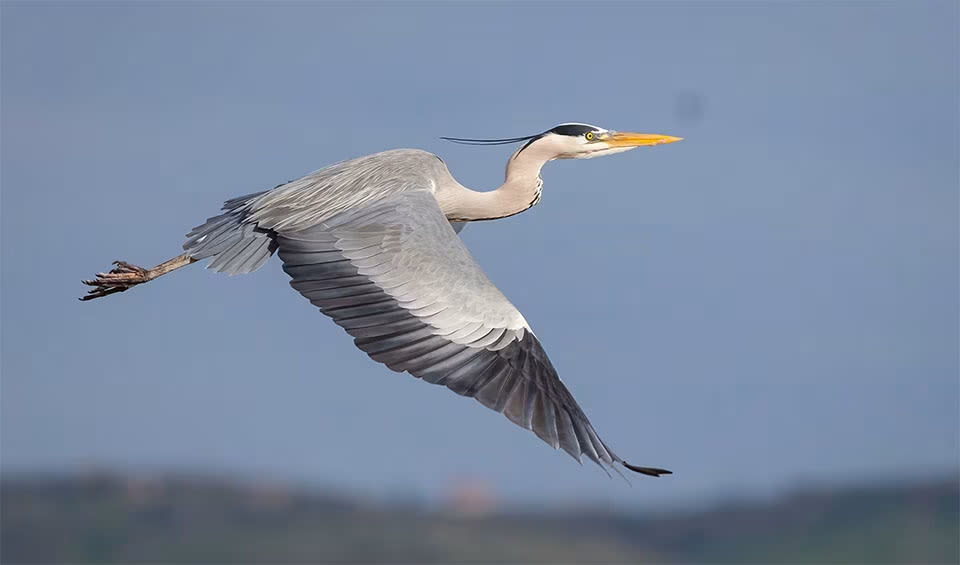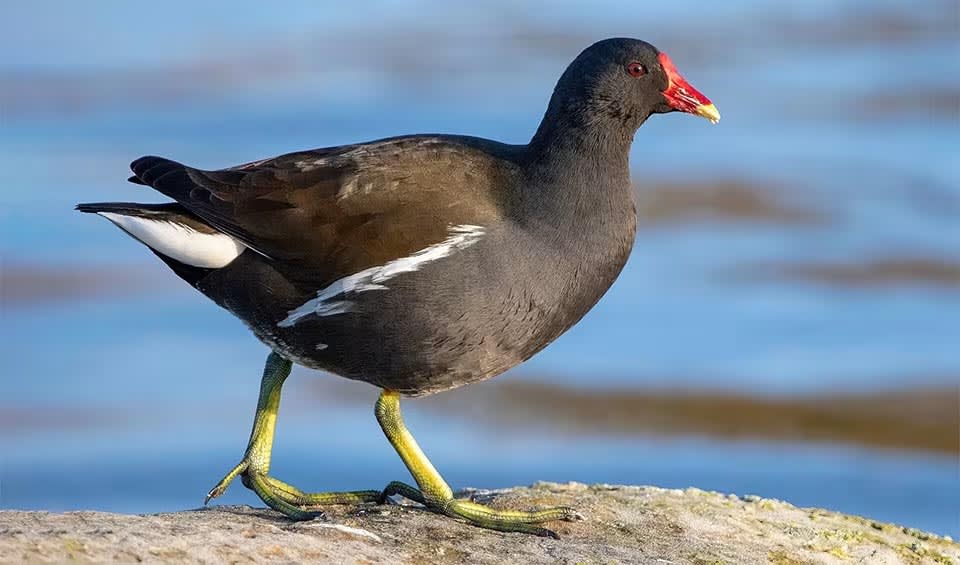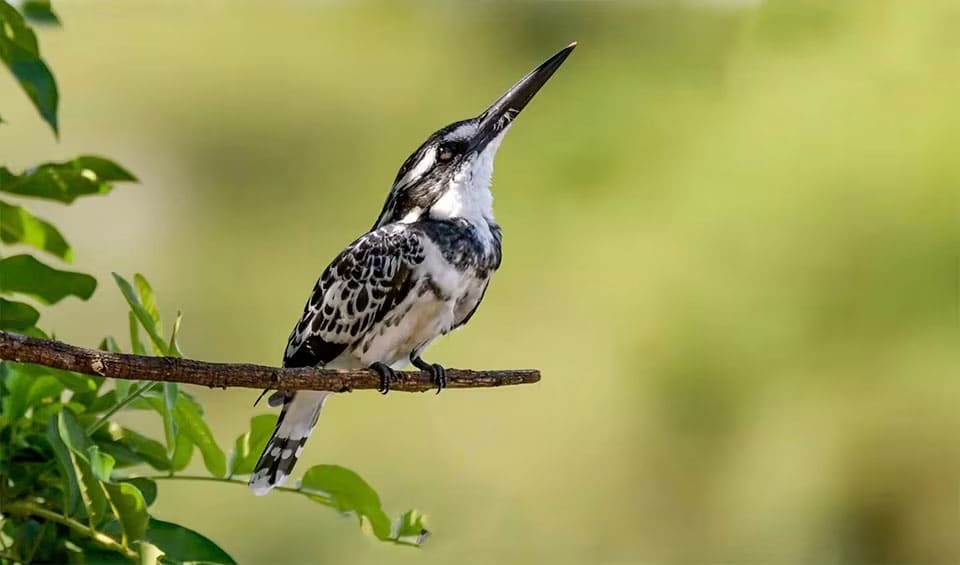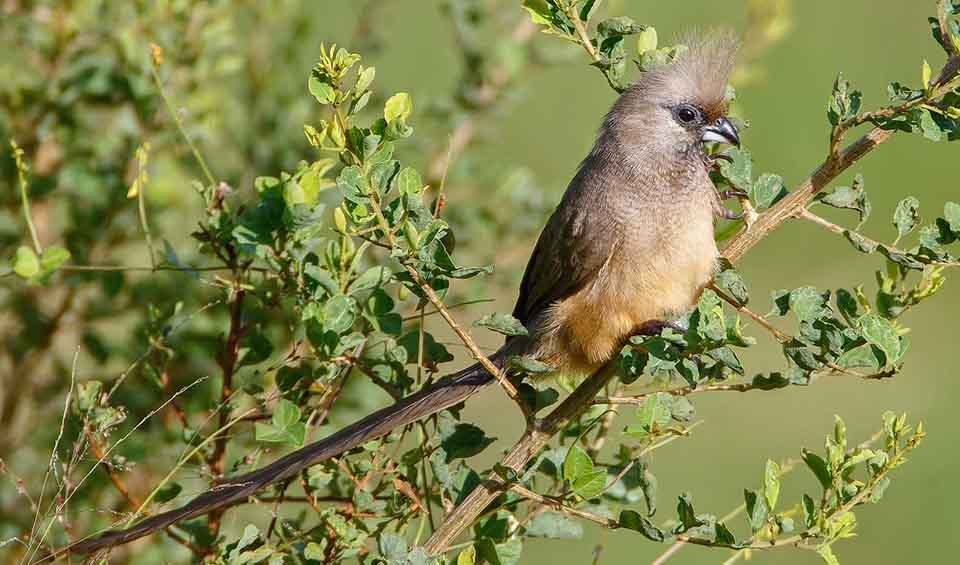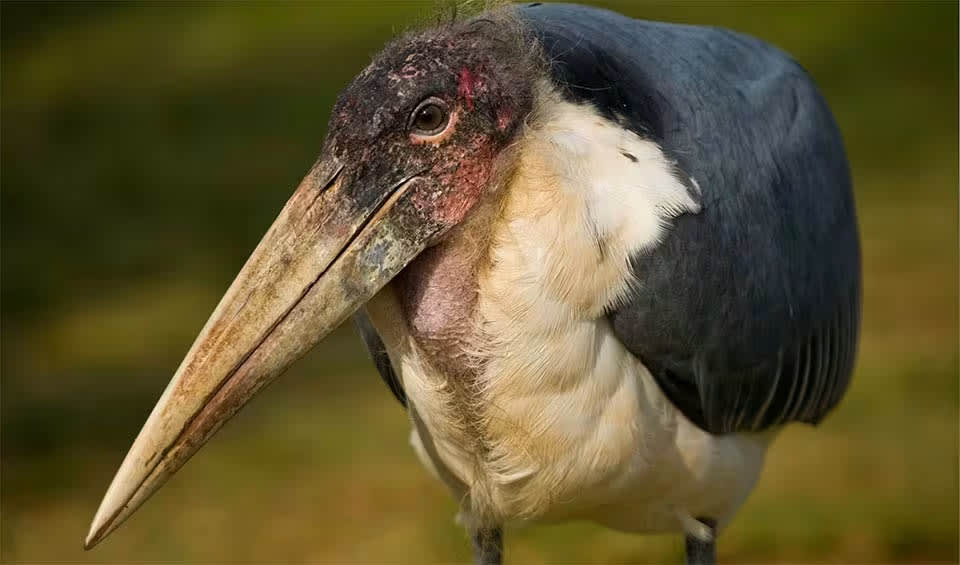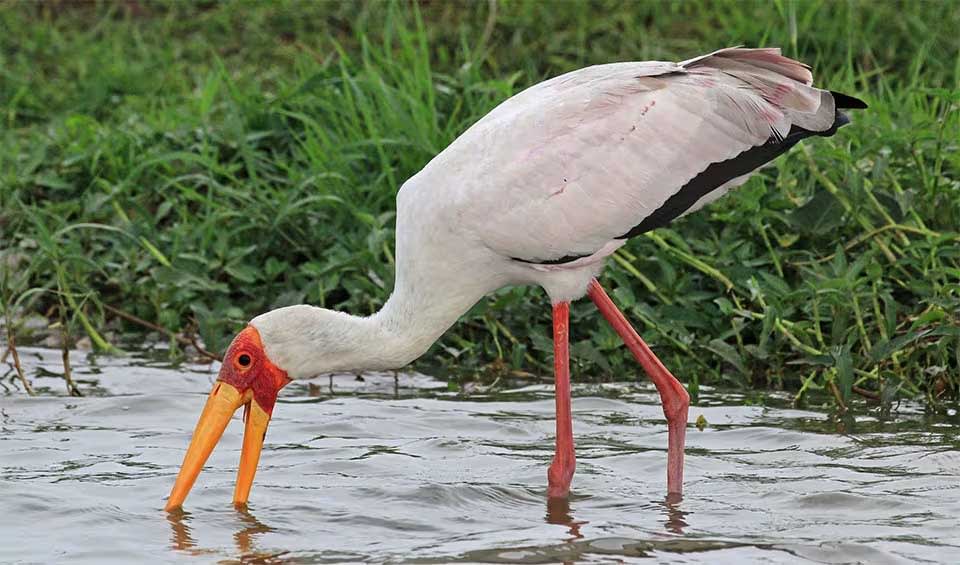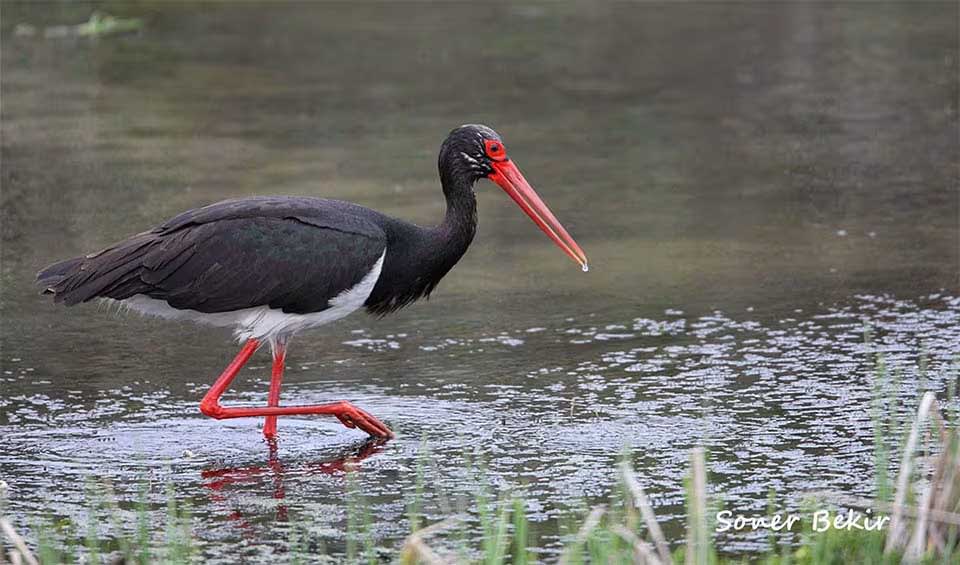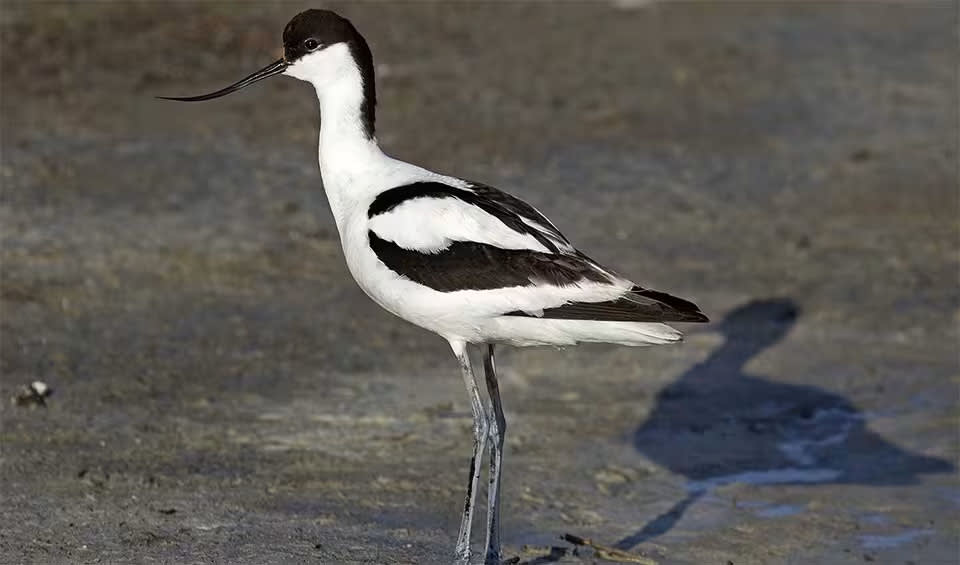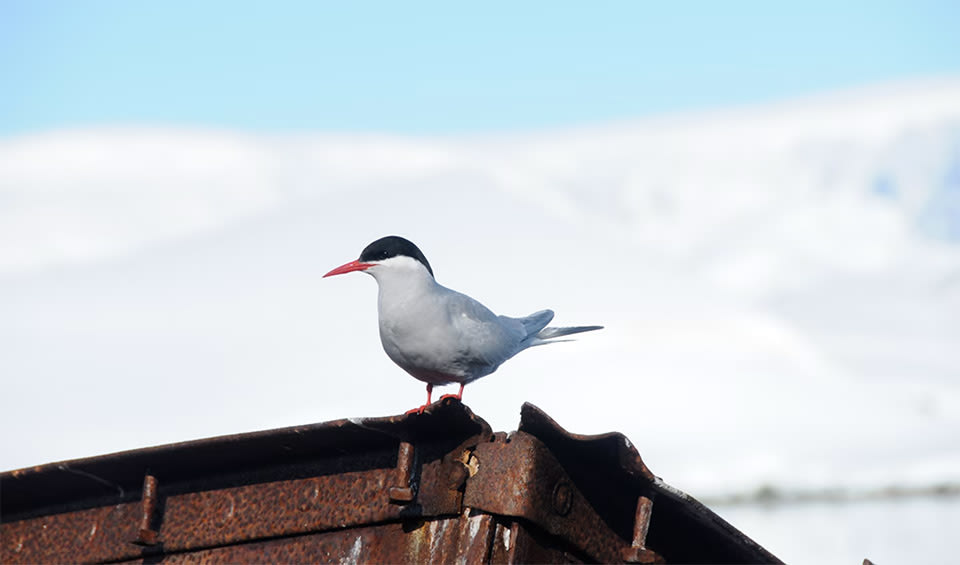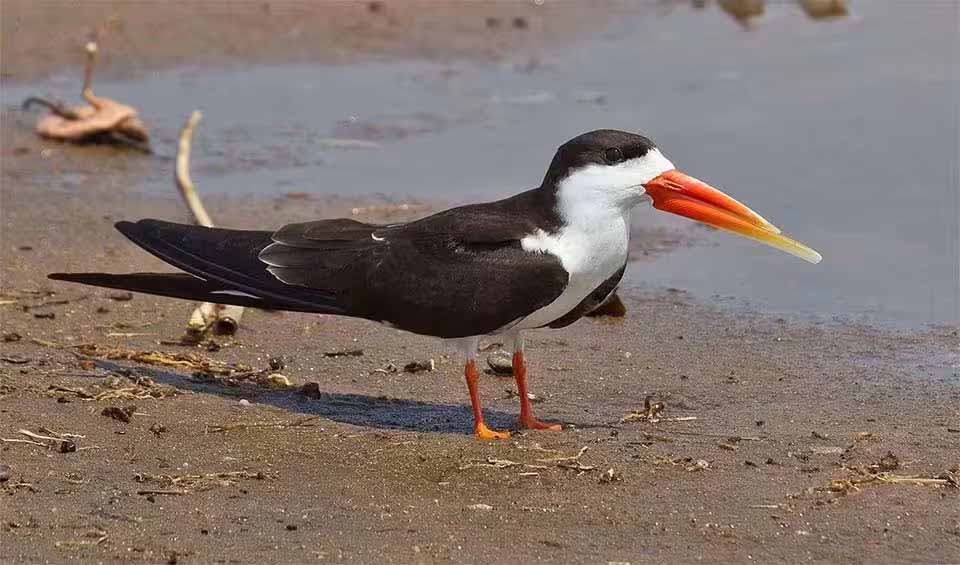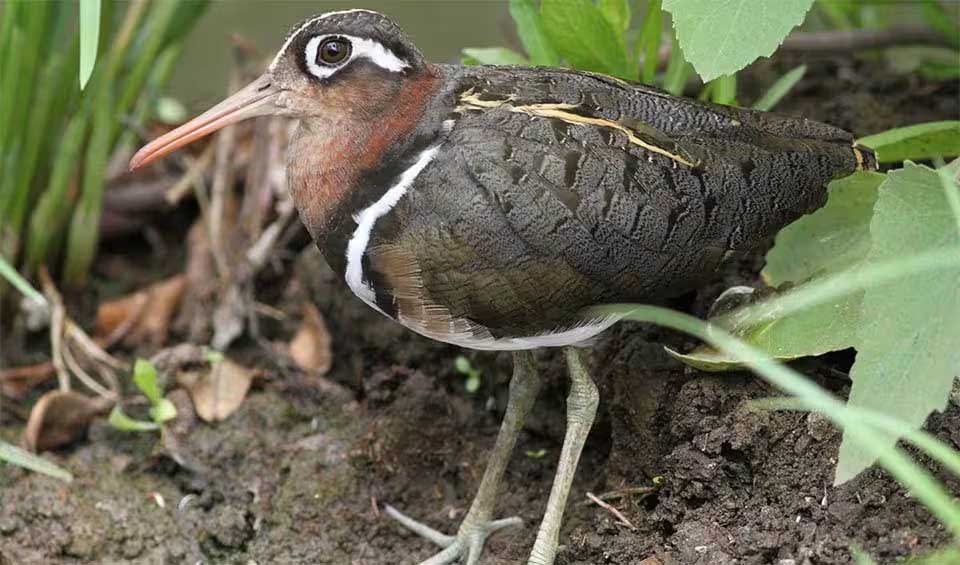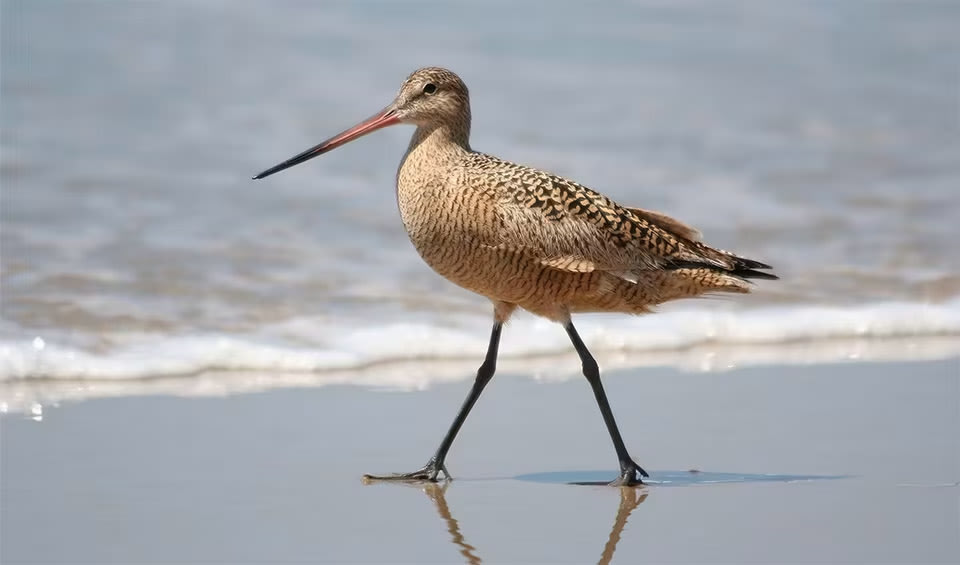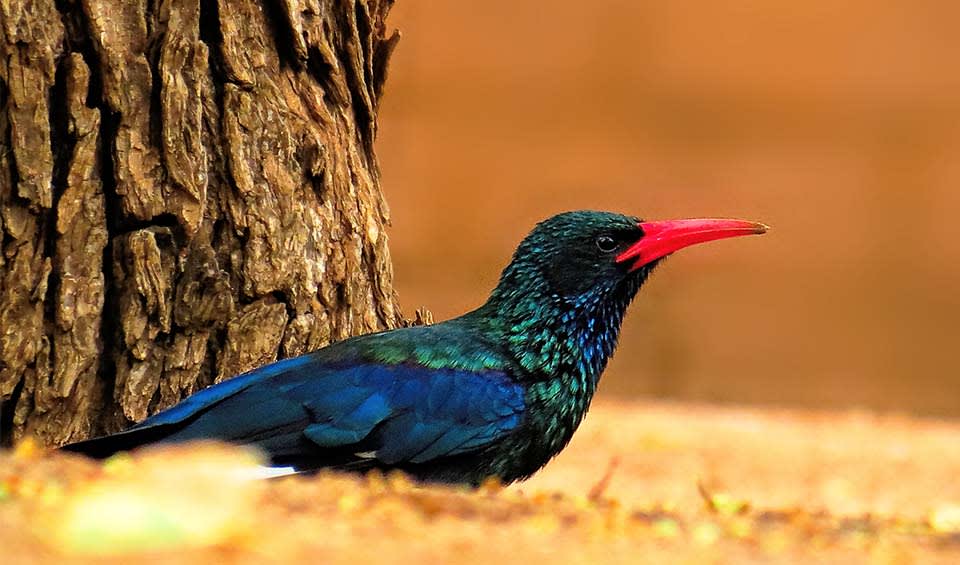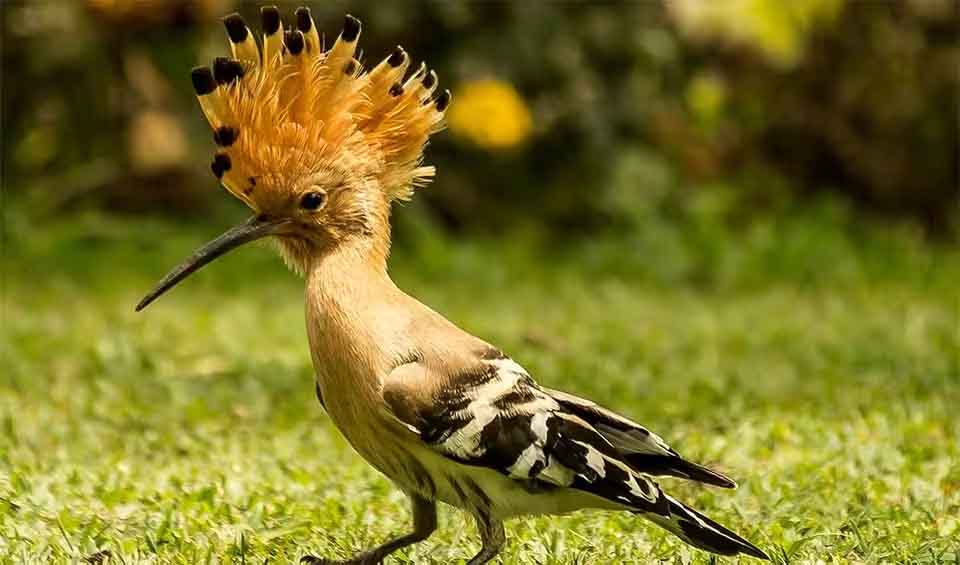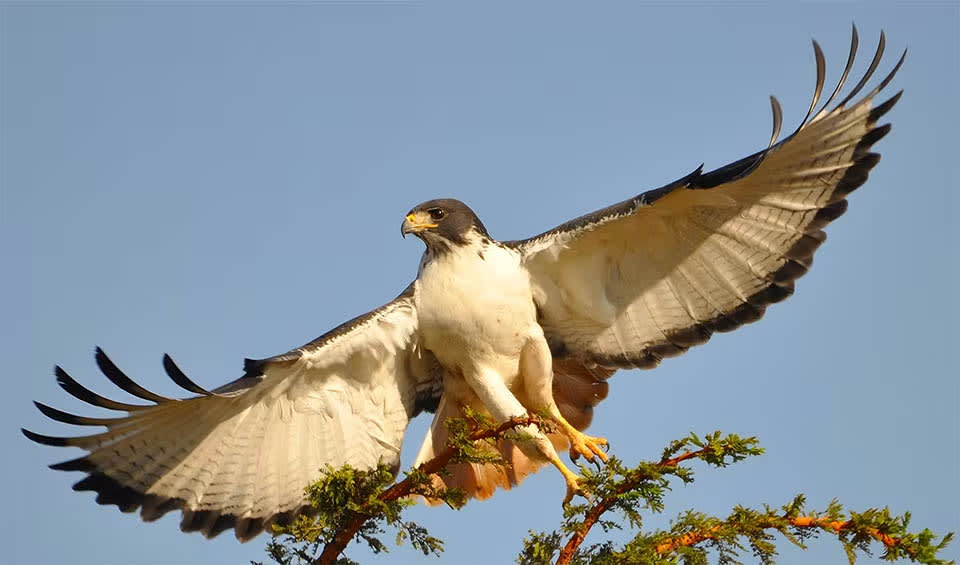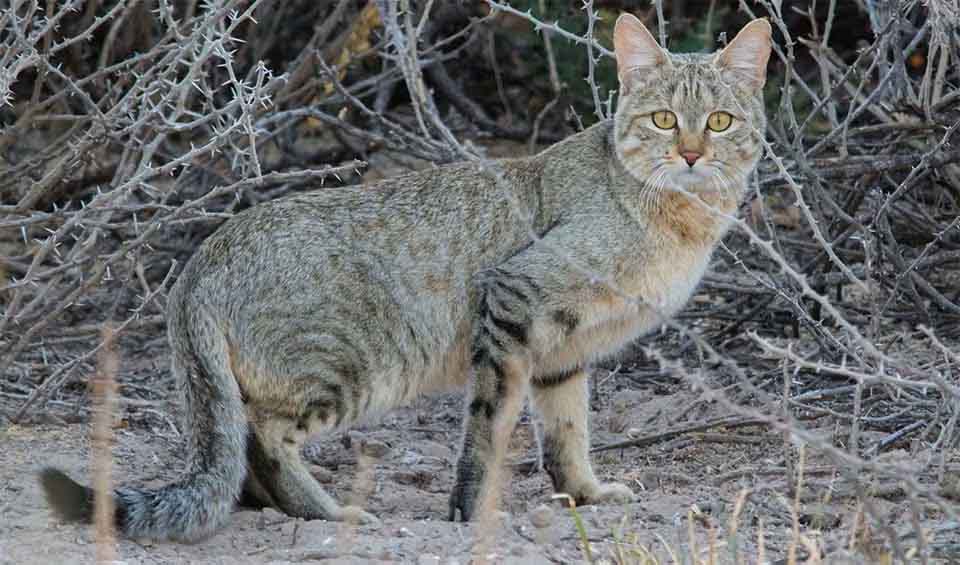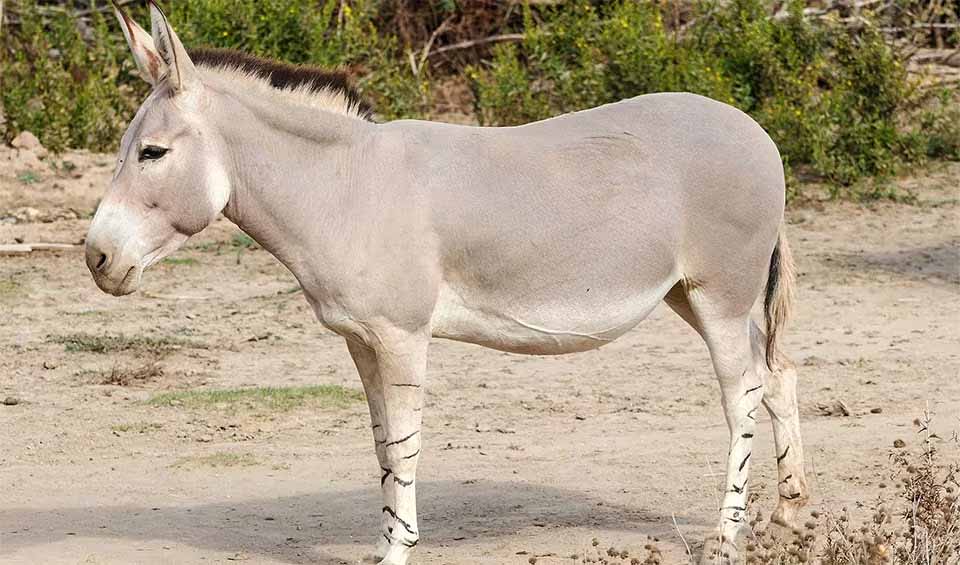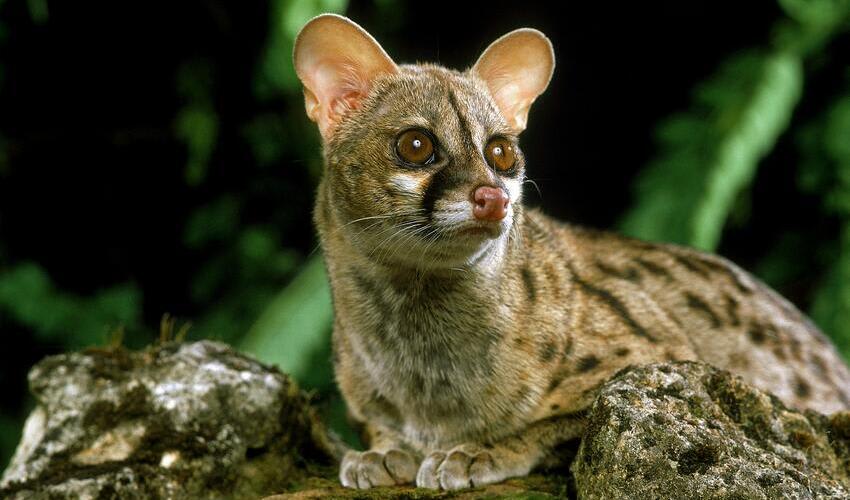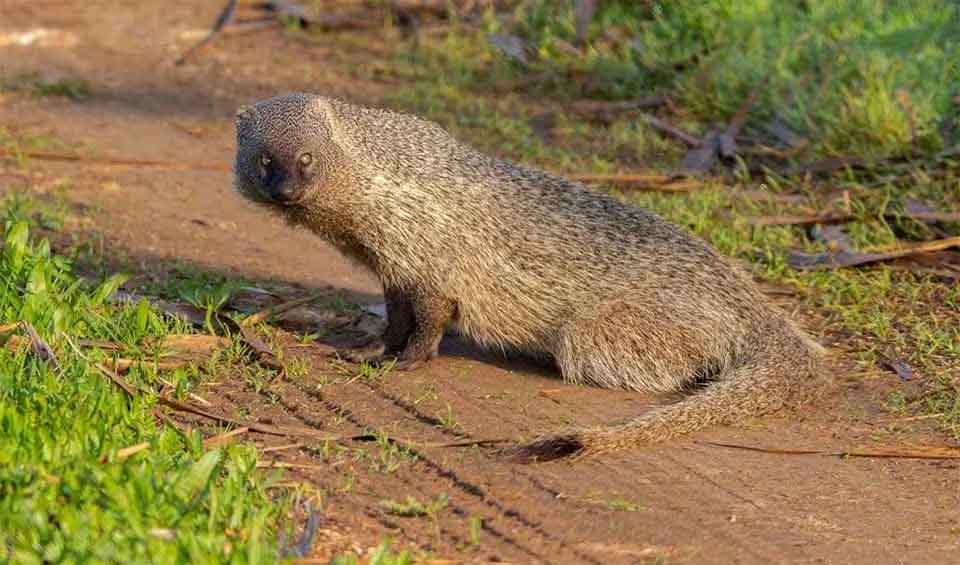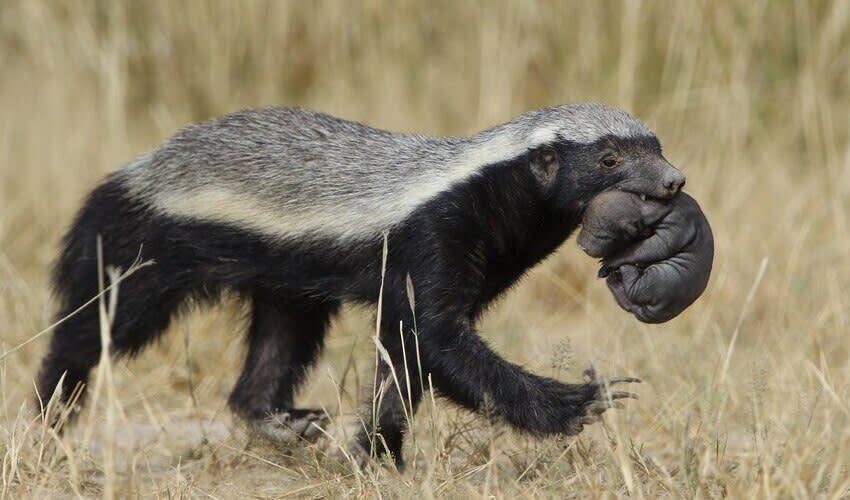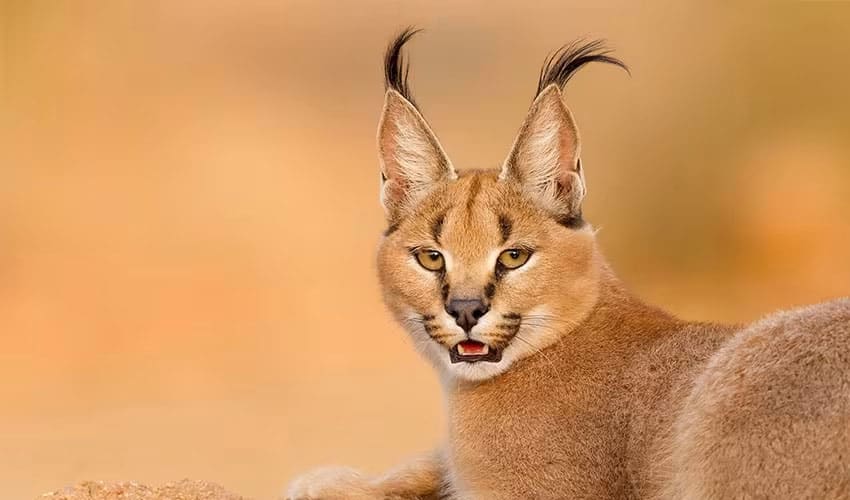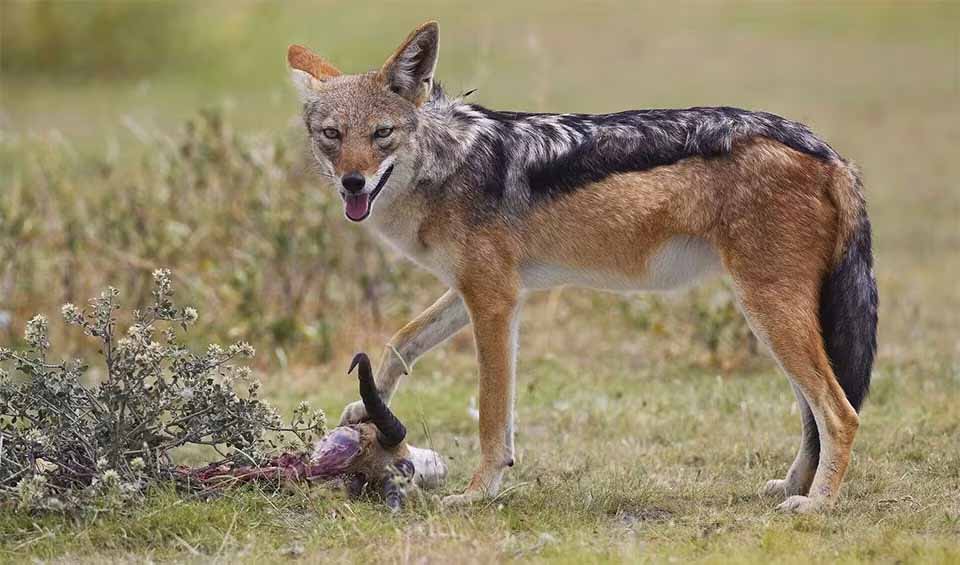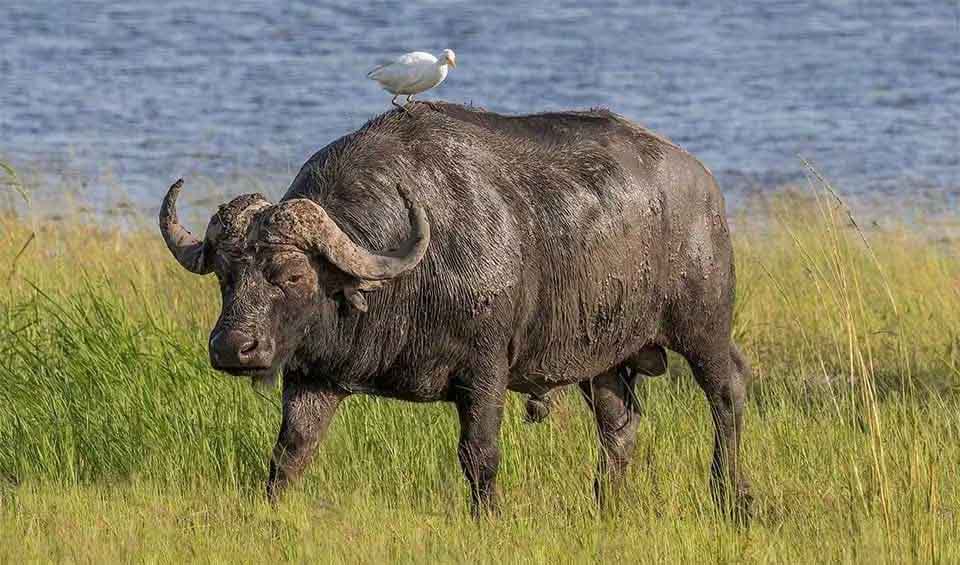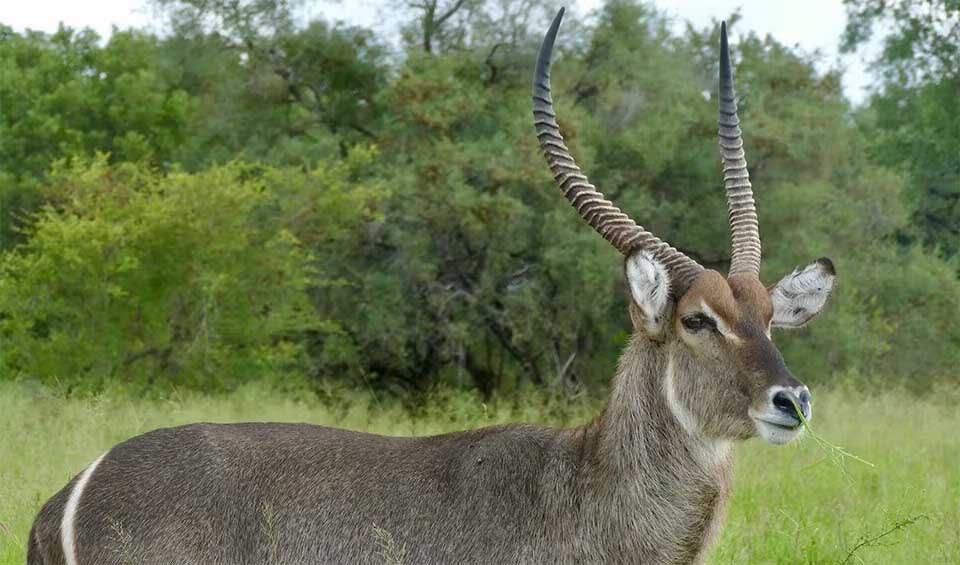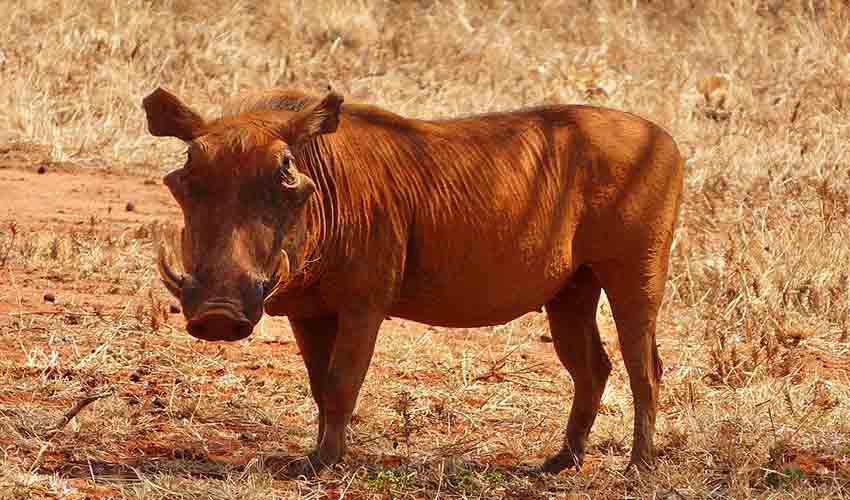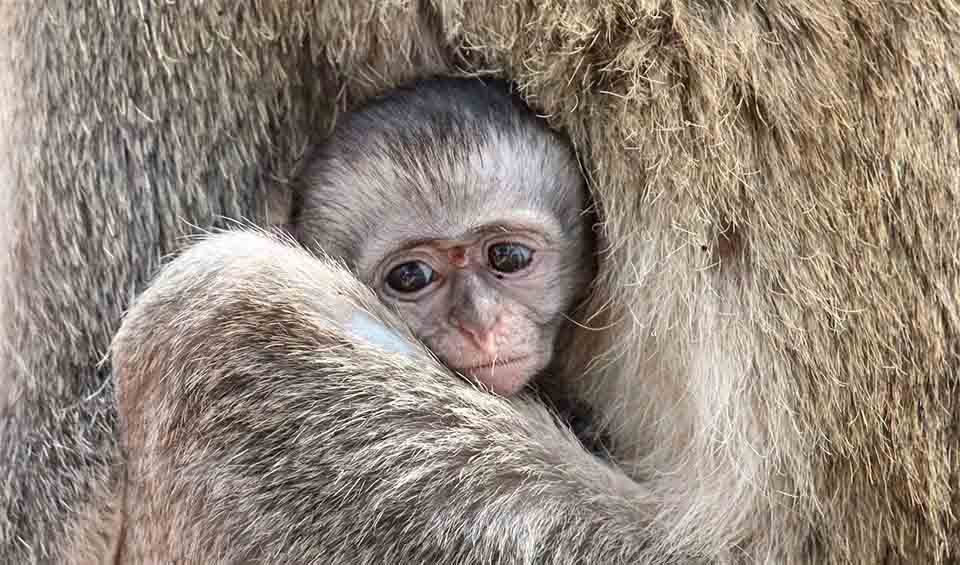Search for Somalia
Largetooth sawfish
The only sawfish known to spend long stretches of its life in freshwater lakes, not just rivers or coasts
Red-footed booby
Goofy-looking yet evolutionarily refined for life above the waves
Eastern crested guineafowl
Known for their noisy, rattling, and clucking calls, which echoes loudly through the forest
Scalloped hammerhead
Their skin actually darkens, just like a sunburn!
Pel’s fishing owl
Doesn’t care about rodents or birds — it’s all about the fish, frogs, and aquatic snacks
Reed cormorant
Despite its short stature, it’s a strong and fast flier
Long-crested eagle
Got a long, floppy crest of black feathers sticking up from the back of its head like a windblown mohawk
Abyssinian ground hornbill
Prefers to walk the Earth like a feathered tank, only flying when necessary — wings are for backup, not daily use
Common duiker
And they live up to the name — these little antelopes are known for diving headfirst into thickets when spooked
African harrier-hawk
Has double-jointed ankles that let it bend its legs backward, forward, and sideways
Flap-necked chameleon
Its tongue can shoot out up to twice its body length in a fraction of a second
Hamadryas baboon
In ancient Egypt, they were associated with the god Thoth
Black crake
They’re always close to the reeds, but just bold enough to be seen
Martial eagle
One of Africa’s largest and most powerful birds of prey—a true apex predator of the skies
Knob-billed duck
Males sport a big, bumpy black “knob” on top of their bill — like a bird-sized bike helmet
Slender-tailed nightjar
So well hidden you could step over it without ever knowing
Ruddy turnstone
They flip the script — literally!
European turtle dove
The only long-distance migratory dove in Europe
Klipspringer
Natural-born climber, capable of leaping with incredible agility across steep cliffs and boulder-strewn slopes
African paradise flycatcher
Its call—a soft, sweet “chee-chee” or chattering trill—can often be heard before the bird itself is seen
Red-lipped snake
Mildly venomous and completely harmless to humans
Rufous beaked snake
Often dig its own shelter or take over abandoned rodent holes
Common slender mongoose
Can take on a cobra with nothing but speed and confidence
Günther’s dik-dik
One of the smallest antelopes in the world
Little sparrowhawk
The fun-sized falcon of the forest, but with all the attitude of a full-grown eagle
Leopard tortoise
Famous for its beautiful, patterned shell that resembles the spotted coat of a leopard
African grey hornbill
One of the more subtly beautiful members of the hornbill family
Crowned hornbill
Have sharp eyesight and are known to mob snakes they spot near their nests
Long-tailed paradise whydah
It’s not just color — the entire body shape of males changes between seasons
Common dwarf mongoose
Tiny but mighty warriors of Africa — proof that being small doesn’t mean you can’t live large
Hadada ibis
Natural alarm clocks in African cities — whether you want them or not!
Brown-hooded kingfisher
Isn’t obsessed with fishing — in fact, it rarely fishes at all!
Grey-headed kingfisher
Despite the name, it rarely goes fishing!
Black-crowned night heron
One of the most widespread and adaptable herons in the world
Steppe eagle
The treasured bird of Saladin, the first Sultan of Egypt
African softshell turtle
Instead of a bony shell, it has a flat, leathery covering that helps it glide smoothly through the water
Beira
Its large, rabbit-like ears are what gave it the species name megalotis, meaning “big-eared”
East African oryx
They can raise their body temperatures to avoid loss of water from their body by sweating
White-tailed mongoose
One of its favorite snacks? Beetles and other crunchy bugs!
Lesser kudu
Bushland antelope found in East Africa; often considered the pretties of all antilopes
Cape bushbuck
Females hide their young and eat the feces after nursing them, so no trail of their scents remains to entice predators
Common ringed plover
This bird taps its feet to imitate rain to make the prey reach the surface
African jacana
Chicks are skilled swimmers and divers, able to paddle through the water just hours after hatching
Red-footed falcon
Their favorite snack? Large insects like locusts and dragonflies
African darter
African darters or ‘snakebirds’ are expert underwater fishermen equipped with stealth, diving skills, and a spear-like bill
Little tern
Renowned for their spectacular aerial displays during courtship, including steep dives and intricate flight patterns
Northern giraffe
Most endangered giraffe species is witnessing silent extinction
European roller
Loves trees! Only member of its family breeding in Europe
Eurasian oystercatcher
The masters of catching oysters, clams, and cockles
Central African rock python
Its sheer size and presence make it a dominant predator wherever it is found
Lesser black-backed gull
A common sight in coastal regions throughout the Northern Hemisphere
Common egg eater
Has the incredible ability to swallow eggs that are much larger than its own head
White-faced whistling duck
Loud birds with a distinct three-note whistling sound
Bateleur
One of the easiest birds of prey to identify from a distance
Red-rumped swallow
Amazing flyers — they can even drink water while they’re flying!
Hirola
People sometimes call it the “four-eyed antelope” because of the dark spots under its eyes
Great white pelican
Underneath this colorful beak, there’s a hidden surprise – a built-in net for scooping up a delicious lunch!
Pink-backed pelican
Mostly pale grey or white, but when the light hits just right, you’ll see a rosy-pink blush across their back and wings
Northern bald ibis
Considered a sacred bird by ancient Egyptians, often depicted in their art and mythology
Barn swallow
Most common and widely distributed swallow globally
Common nightingale
Often called the “singer of the night,” it produces a complex and beautiful melody that has captivated people for centuries
Lesser grey shrike
Have been observed remembering the locations of their impaled prey and even using tools to help them catch food
Vulturine guineafowl
Its striking blue skin, coupled with its long, bare neck, gives it an uncanny resemblance to a vulture, hence its name
Rüppells vulture
Once found flying 11,300 meters (37,100 ft) high, sadly, this was more of an accident than a discovery
Great hammerhead
The biggest of all the hammerhead sharks, with a massive head that looks like a giant, flat hammer
Rüppell’s weaver
Skilled builders — can build giant communal nests with multiple chambers, like a bird apartment building!
Yellowfin tuna
Popular food fish, prized for its mild flavor and firm texture
Pantropical spotted dolphin
A champion swimmer and a social butterfly of the warm seas
Brown noddy
They bob their heads up and down as they fly, which is actually how they earned the nickname “Noddy”
Common bottlenose dolphin
Known for their acrobatic leaps, twisting and turning gracefully as they jump completely out of the water
Common dolphin
Often seen riding the bow waves of boats or performing acrobatic leaps out of the water
Tawny eagle
Often seen as a symbol of strength, freedom, and keen vision in many African communities
African fish eagle
With its striking appearance and distinctive call, it is often referred to as the “voice of Africa”
Boomslang
Itd name means “tree snake” in Afrikaans and Dutch, a fitting description of its arboreal lifestyle
Puff adder
Notoriously grumpy, always putting on a dramatic hissy fit when approached
Guttural toad
Known for its loud, ‘guttural’ croak that can be heard from a distance
Little egret
During breeding, they transform with elegant white plumage, adorned by decorative plumes on the head, neck, and back
Egyptian goose
They were commonly depicted in art from ancient Egypt
Eurasian blackcap
The males, in particular, produce a rich and intricate song that contributes to their charm
Common redstart
They consistently display a restless demeanor and exhibit a distinctive, tail-trembling behavior
White wagtail
Holds cultural symbolism in some societies, representing good luck
Eurasian kestrel
Adaptable raptor known for its hovering hunting technique and striking appearance
Graceful prinia
Territorial and defends its territory aggressively against other birds
Common chiffchaff
Their migratory behavior is often linked to the availability of insects for food
Schokari sand racer
With lightning-fast speed and a keen sense of smell, this predator easily captures prey in the desert
Tiger shark
They eat almost anything that comes their way – you name it, they’ll try to snack on it!
Gerenuk
A giraffe look-alike antelope
African openbill
An unrushed flyboy from Africa
Nile monitor
Can deliver a painful bite, tail lashes, and fierce scratches — definitely a reptile to respect!
Rock monitor
One of Africa’s largest and most powerful lizards
White-backed vulture
Their highly acidic stomachs and powerful enzymes help break down and neutralize harmful bacteria and toxins present in the carcasses they feed on
Hooded vulture
They are known to scavenge at rubbish dumps and around slaughterhouses, helping to dispose of animal byproducts and reducing potential health risks
Fischers turaco
With its vibrant plumage and melodic calls, it brings beauty to the forest while playing an essential role as a seed disperser
Shortfin mako shark
Speed and power embodied, they rule the seas with their sleek bodies and jaw-dropping leaping prowess
Blacktip reef shark
Graceful and stealthy, these reef dwellers navigate the coral maze with finesse, showcasing their iconic black-tipped fins
Oceanic whitetip shark
Opportunistic predators of the open ocean, their aggressive and persistent feeding behaviour strikes fear into the hearts of their prey
Bull shark
Fearless and formidable, these aggressive predators command respect in the waters they roam
Whale shark
Gentle giants of the sea, with mouths wide open to filter the ocean’s bounty
Great white shark
Majestic ocean predators, embodying power, speed, and precision in their pursuit of prey
Loggerhead sea turtle
One of the largest and strongest sea turtles in the world
Hawksbill sea turtle
Its slender frame and narrow head bear a beak curved like a hawk’s, earning this marine marvel its name
Emperor angelfish
As it grows older, it undergoes a metamorphosis that is nothing short of extraordinary
Ocellated skink
Stands out with its striking ocelli, or eye-like markings, that adorn its sleek body
Green humphead parrotfish
With a robust body adorned in iridescent hues of emerald and turquoise, it is an underwater jewel that dazzles the eye
African wolf
A genetic mix of 72% grey wolf & 28% Ethiopian wolf was classified as an African variant of the golden jackal until 2015!
Rüppell’s fox
Can be easily identified by its larger ears, making it stand out from red and pale foxes
Superb starling
Widespread and bright; a superb starling indeed
Von der Decken’s hornbill
Female has a black bill, male has a red bill with a white tip and a black lines
Cheetah
Racing to extinction: historically ranging throughout Africa to India, now distributed in small, fragmented populations
African bush elephant
Size matters! The largest of the three elephant species and the largest extant terrestrial creature on our planet
Black rhinoceros
With 3 out of 8 subspecies have been declared extinct, illegal poaching puts these hooked upper lip rhinos in danger
Leopard
Disappearing graceful shadows, this tree-climber is on the way to extinction
Egyptian slit-faced bat
Often called ‘whispering’ bats because their echolocation used to access the area and prey location are low intensity and not strong
Crested porcupine
They don’t shoot quills—they let predators do the hard work by detaching them on contact!
Lesser Egyptian jerboa
This ‘mini kangaroo’ leaps up to 3 m (9.8 ft) in a single jump, thanks to its incredibly large hind legs
Naked-rumped tomb bat
These ‘sloppy animals’ tend to have a strong and unpleasant odor due to accumulated wastes in roosts
Trident bat
Highly mobile bats that tend to roost in hundreds to thousands of whatever shelters they can find
Hippopotamus
1.6 ton (1.5 tonne) + 48 km/h (30 mph) = what do you think?
Great cormorant
Due to their adaptability and willingness to migrate to more favorable habitats, great cormorants are found worldwide
Brown booby
An impressively acrobatic bird that can catch flying fish mid-jump
Great frigatebird
These birds spend weeks in the air and hunt, preen and even sleep while in flight
Somali ostrich
Blue necked browser ostrich from North-east Africa
Barn owl
The most cosmopolitan of owls with home ranges extending across the globe
Northern white-faced owl
These owls are strictly nocturnal and generalist hunters, preying on moths, scorpions, birds, rodents, and everything in between
Little owl
Aptly named after the goddesses of wisdom and war, little owls have lived alongside human civilizations since 500 BC
Rose-ringed parakeet
If you ever forget the tune of a song, don’t worry; this bird has your back
Wilsons storm petrel
This species is found in all world oceans except the north Pacific Ocean
Little grebe
This cute and small bird is one of the most elite hunters below the water’s surface
Greater honeyguide
The master hunter and the bane of the bees
Black-throated barbet
One of the smaller barbet species that resemble a sparrow, only found in Africa
Lesser flamingo
This bird holds a Guinness book of world records to its name
Greater flamingo
The iconic and elegant bird with a curved pink bill is known for turning heads
Red-billed tropicbird
Professional marine forecasters to optimize breeding success and prey availability
Red-tailed tropicbird
They dance along with their gorgeous red tails to attract partners in a faithful courtship
Hamerkop
The hammerheads of the bird kingdom
Eurasian spoonbill
This bird is unmistakable for its namesake, spoon-shaped bill
African sacred ibis
The fossil records suggest that this species has been on this planet for millions of years
Glossy ibis
These birds seem to have lost their way to the beauty pageant
Goliath heron
This large heron is a firm believer in the adage: “Patience is the key to success”
Gray heron
Exhibit powerful flight, with distinctive slow wing beats and an extended neck, defining features during their aerial movements
House sparrow
The most widely dispersed wild bird
Red-billed quelea
The most numerous wild bird species in the world
Marsh warbler
One of the best avian vocal mimics
Kori bustard
These large birds may remind you of ostriches, but they can fly!
Common moorhen
Living around smelly brackish marshes is unthinkable, but these birds love their isolated habitat or don’t have a sense of smell
Helmeted guineafowl
Native to Africa, it is the best-known bird of its family, broadly introduced as domesticated species
Pygmy falcon
Smallest raptor of Africa with a heart bigger than lion’s
Peregrine falcon
At the speed of over 321 km/h (200 mph), this bird outraces a Formula1 car
Pied kingfisher
The only member of the genus having wide distribution across Asia and Africa is sociable, unlike other members of its family
Speckled mousebird
Their dull mousy-brown color justifies the name pretty well
Blue-naped mousebird
They can support their whole body weight on a single toenail! I wonder how many steps long their nail care routine is
Marabou stork
This Nature’s cleaners are the largest & heaviest living stork
Yellow-billed stork
As the name suggests, this whitish stork has a bright red face and a distinctively long yellow bill
Saddle-billed stork
The colorful stork of Africa
African woolly-necked stork
One of the most elegant and quietly impressive birds of Africa’s wetlands
Black stork
The stork with the widest geographic range
White stork
The folktale bird that brings the babies!
Pied avocet
One of the very few birds with an upturned bill
Black-winged stilt
Elegant long-legged wader, common almost worldwide
Eurasian stone-curlew
One of the bigger waders with a reptilian eye
Water thick-knee
Its giant yellow eyes aren’t just for dramatic effect — they give it excellent night vision
Crab-plover
This bird has learned how to use a spear and made it an extension of itself
Arctic tern
This bird can give any cross-country runner a run for their money
Common tern
This bird holds the record of the longest distance flown by any bird in recorded history
African skimmer
Global Warming got nothing on this bird
Greater painted-snipe
Looks no less than a renaissance masterpiece
Black-tailed godwit
The most elegant of all godwit species
Common swift
These enthusiastic travelers can be seen almost worldwide in different seasons
Green wood hoopoe
Insect-eating, tree-dwelling, and an incredible co-partner. That said, there’s nothing uninteresting about this one
Eurasian hoopoe
Dependable wings and a muscular build. Nope, we aren’t talking about the next Redbull ad campaign
Mallard
This invasive species is the ancestor to most of the modern ducks
White-headed vulture
They’re known as ‘old world vultures’ endemic to Africa and the first ones to get a whiff of corpses
Egyptian vulture
A highly intelligent species that is the world’s only tool-using vulture with a long migratory range
Western marsh harrier
The yellow-eyed devil
Eurasian sparrowhawk
Better call the ambulance before the Sparrowhawk comes to devour all those who are injured
Augur buzzard
The sturdy body complimented with broad wings make these raptors one of a kind
Common buzzard
They eat just about everything — rabbits, rodents, birds, carrion, earthworms, insects… even beetles get a look-in
Short-toed snake eagle
A magnificent migratory bird with long, broad wings and a short tail that sings in the form of musical whistles
Southern banded snake eagle
During courtship displays, they perform spiraling dives and engage in mid-air talon-locking displays with their mates
Lappet-faced vulture
The African giant vulture has a wingspan up to 2.80 m (9 ft) wide
Bearded vulture
The only living creature that feeds on bone marrow from carcasses in high and inaccessible mountain areas
Osprey
One of only six land-birds with a cosmopolitan distribution habituating all continents except Antarctica
Secretarybird
A long-legged bird with a stunning black feather crest on its back head
Rock hyrax
African rock dwellers that resemble pikas , but are more closely related to elephants!
Aardvark
Dig large subterranean burrows that other animals can hide in during fires, hence preventing wildlife deaths
Banded mongoose
Living in troops, a real-life example of “All for one, and one for all”
African wildcat
The direct ancestor of the domestic cat—no wonder why they look so alike!
African wild ass
Able to survive water lose up to 30% of the body weight, and capable of restoring it within 2-5 minutes when drinking water
Grévy’s zebra
The largest wild species of the horses family and the most threatened zebra species
Plains zebra
These zebras with the underbelly stripes are the longest migrators in Africa
Common (spotted) genet
We can rotate our pinnae by 80 degrees!
Egyptian mongoose
Appeared in Egyptian paintings from 300 B.C., it is known as “Pharaoh’s cat” and is considered a holy animal that is housed in temples
Striped hyena
The only hyena species outside of Africa that can go 15km (10 miles) for a meal
Spotted hyena
Also known as Laughing Hyena, it gets chewed a lot for being cruddy and a good-for-nothing scavenger!
Aardwolf
Unlike other hyenas, they do not hunt or scavenge but mainly consume termites
Striped polecat
They are also called ‘zorilla’ which comes from the Spanish word ‘zorro’, meaning small fox, but they are not fox
Honey badger
Well known for their ferocity, these fearless little creatures are always ready to take on an entire pride of lions
Serval
Owners of the longest legs-for-body-size of all cats are widespread in sub-Saharan savannahs
Caracal
“To put the cat among the pigeons” was phrased on caracals, as they were once trained for hunting game birds for Persian and Indian royalty
Bat-eared fox
The ears not only resemble a bat’s ear, but they also have the same purpose – locate insects
Black-backed jackal
Has two subspecies populations, separated by 900km (560 miles)
Side-striped jackal
Larger than its jackal relatives and easily distinguishable with white stripes on the sides
Grant’s gazelle
Famous for their “stotting” antics to impress others and deter predators
Kirk’s dik-dik
A frightened female whistles repeating the dik-dik sound, giving rise to the name dik-dik
Salt’s dik-dik
Cools off through its nose!
African buffalo
They are also known as the “black death” or “widowmaker,” which says a lot about them – dangerous!
Waterbuck
Predators usually don’t hunt adult waterbucks as they have an unpleasant body odor because of the waterproofing secretions
Hartebeest
They enjoy a sedentary and lazy lifestyle but run fast if they sense danger
Topi
This prestigious, highly social, antelope species of Africa could run up to 80 km/h (50 mph)
Greater kudu
One of the largest antelopes – a male kudu having thick and spiraled horns as long as 1.8m (6 feet) in length
Reticulated giraffe
The most common giraffe in zoos is the second most endangered giraffe species
Desert warthog
A “comeback species” in African wildlife studies
Blue monkey
The blue monkey’s digestive tract has developed to accommodate a diverse range of diets; however, they prefer fruits 50% of the time
Arabian camel
No more true wild animals: all are domesticated or escaped from stock
Vervet monkey
Used for studying genetic and social behaviors of humans as they have human-like characteristics such as anxiety, hypertension, and social and dependent alcohol use
Olive baboon
The most wide-ranging of all baboons, native to 25 equatorial African countries
African spurred tortoise
This giant is the largest African and third of all the tortoises on earth
Yellow-bellied sea snake
The most widespread species of snakes on earth are found throughout the Indian and Pacific Oceans and from Africa to Central America
Black mamba
Africa’s most feared snake that would inevitably evoke reactions of fear by just its looks
Nile crocodile
One of the most iconic animals of Africa and the second largest reptile on earth

